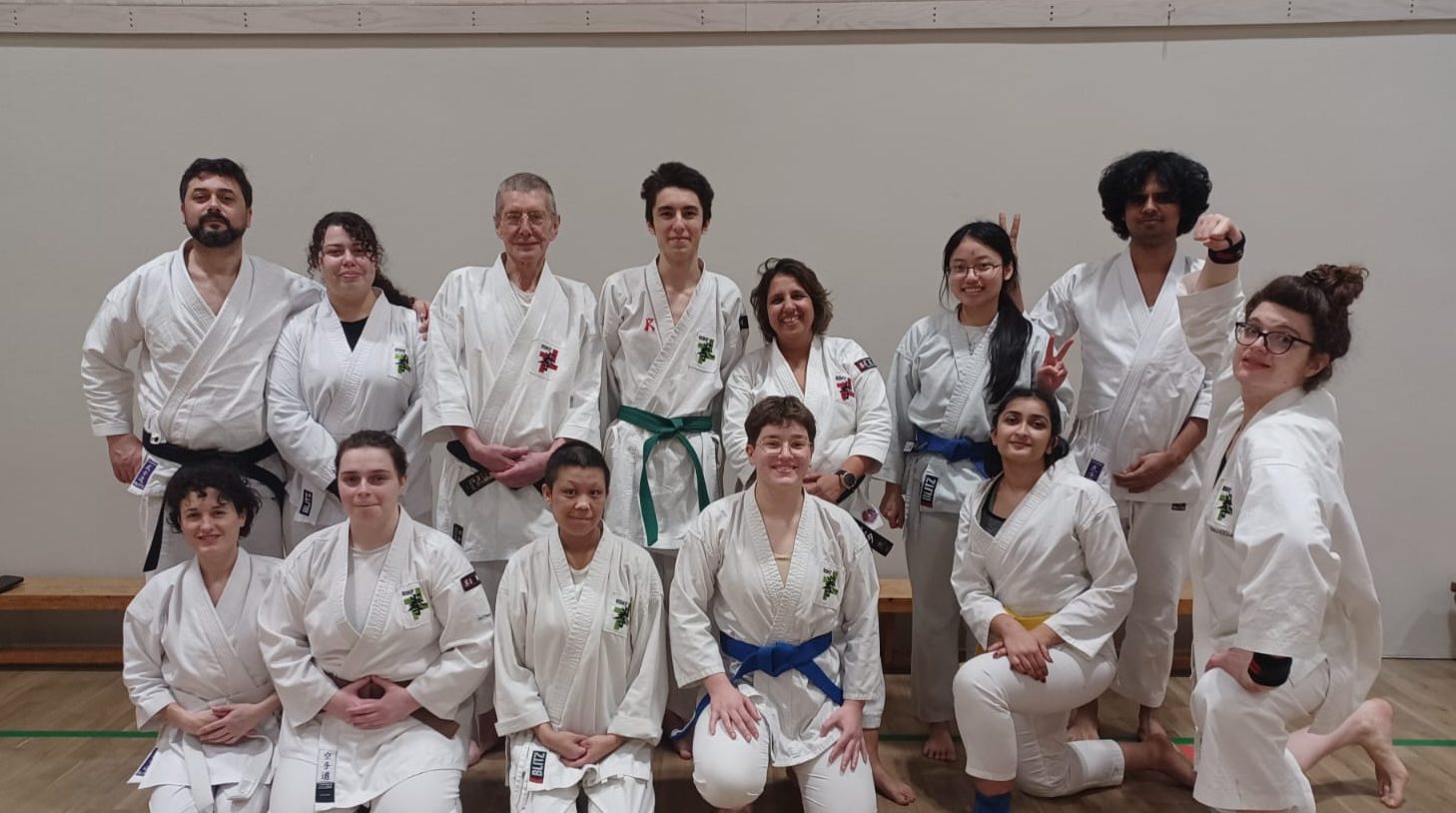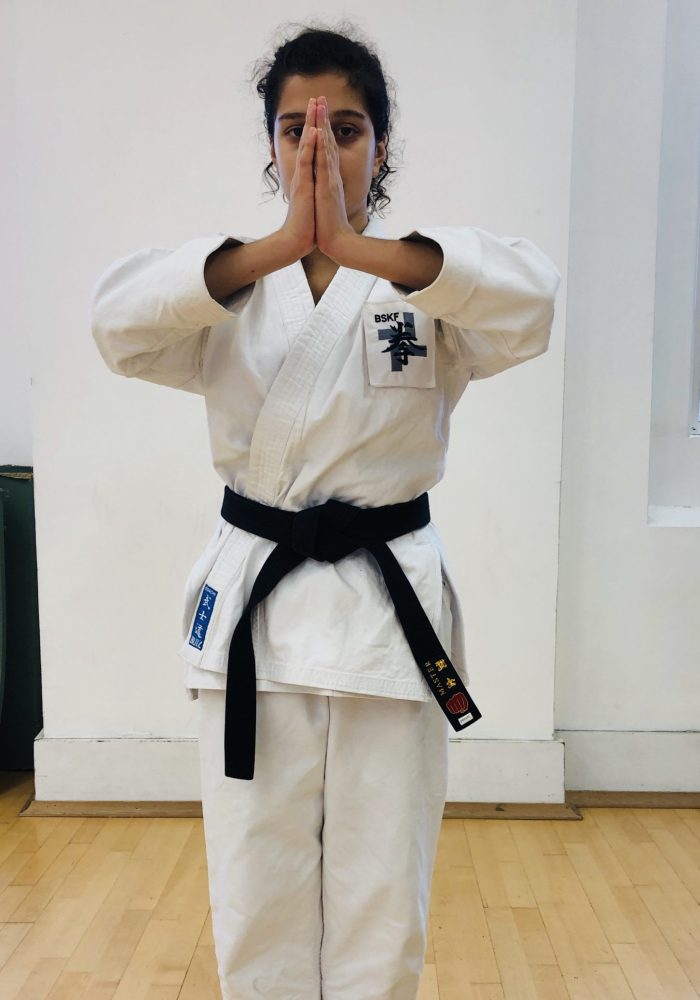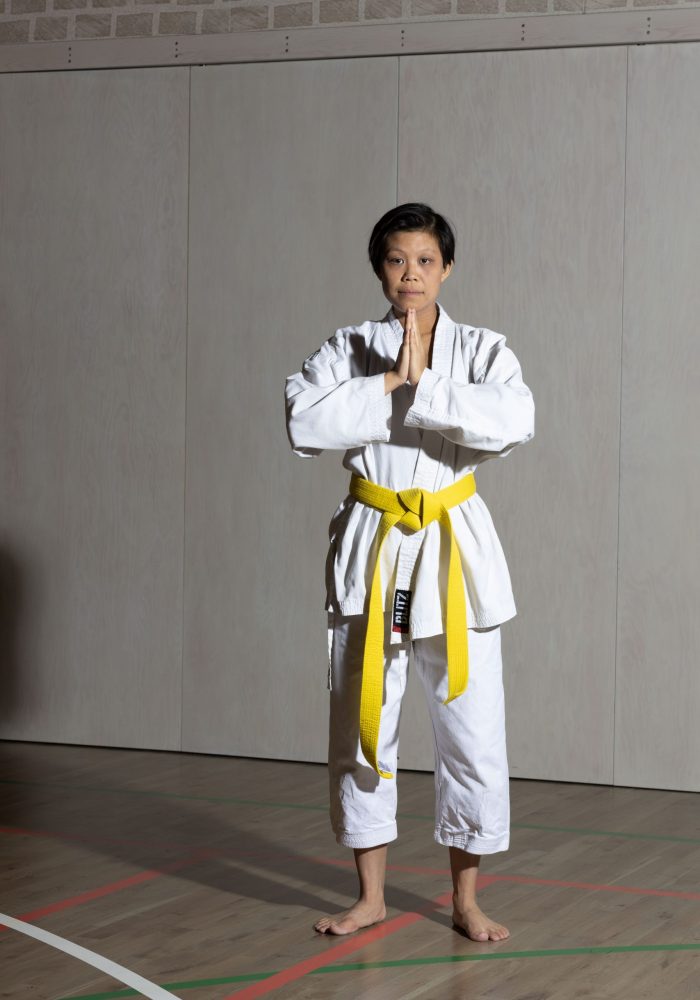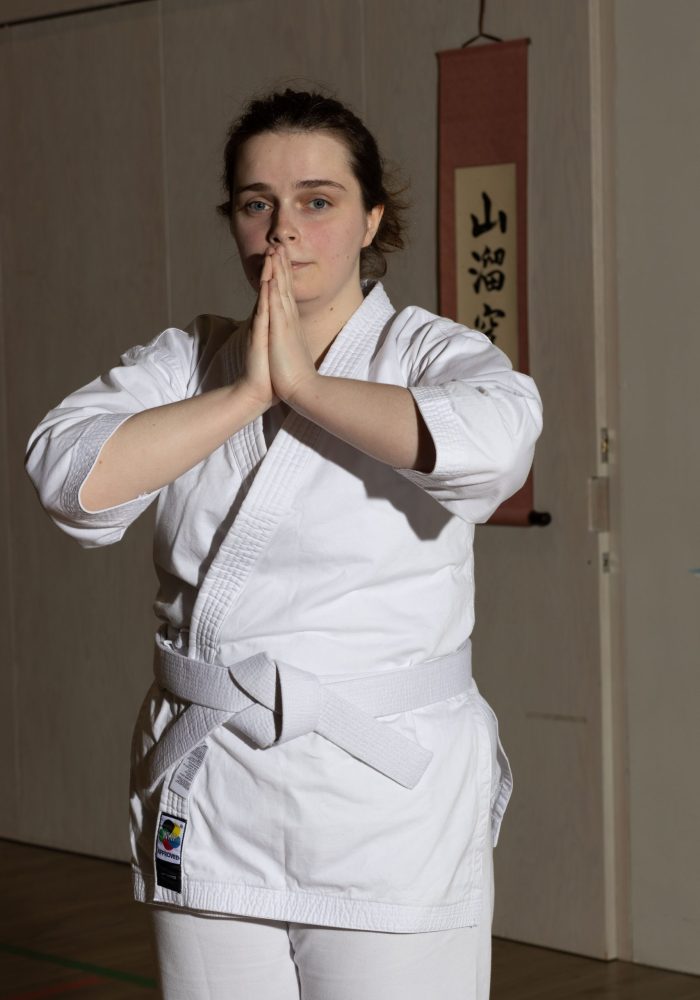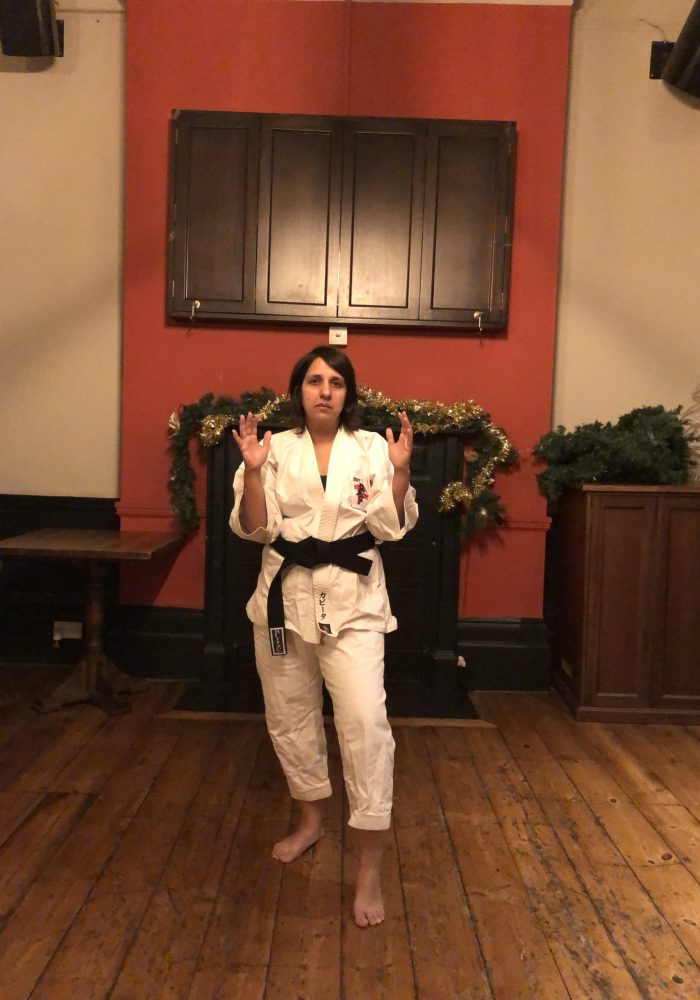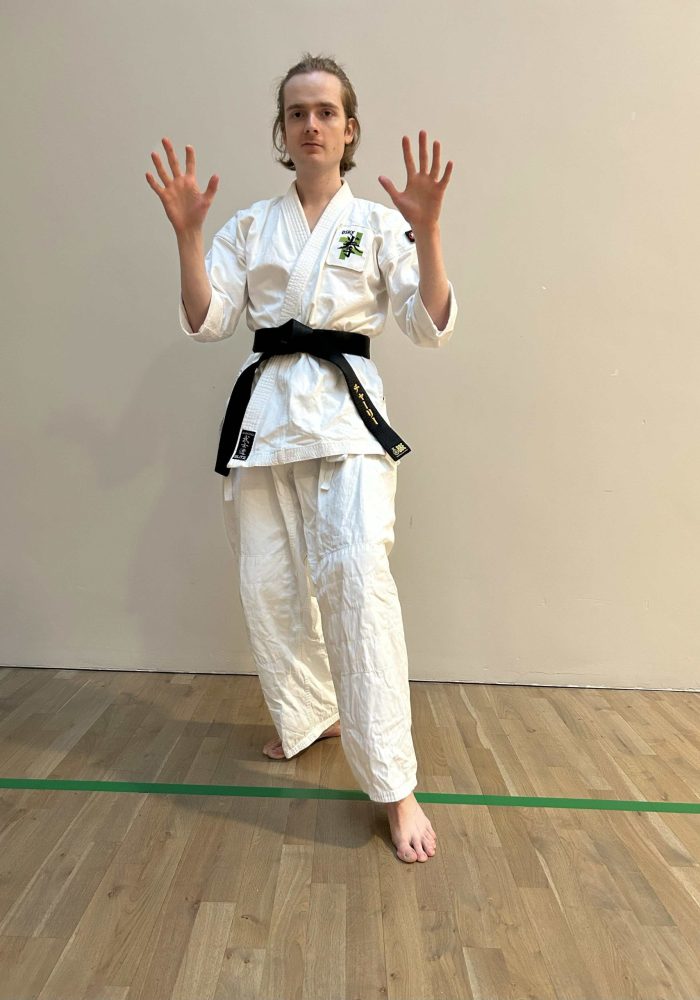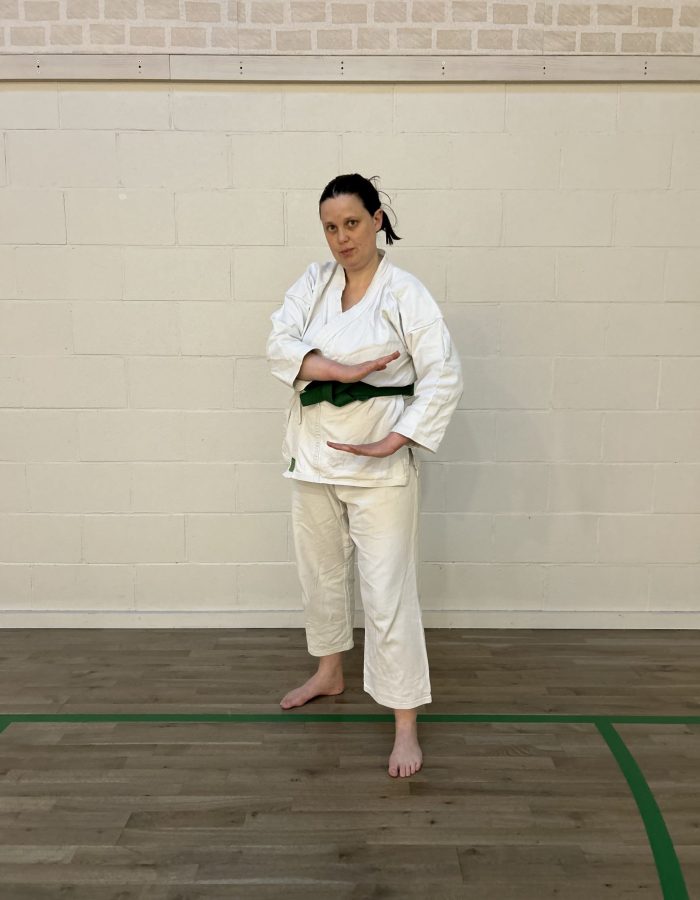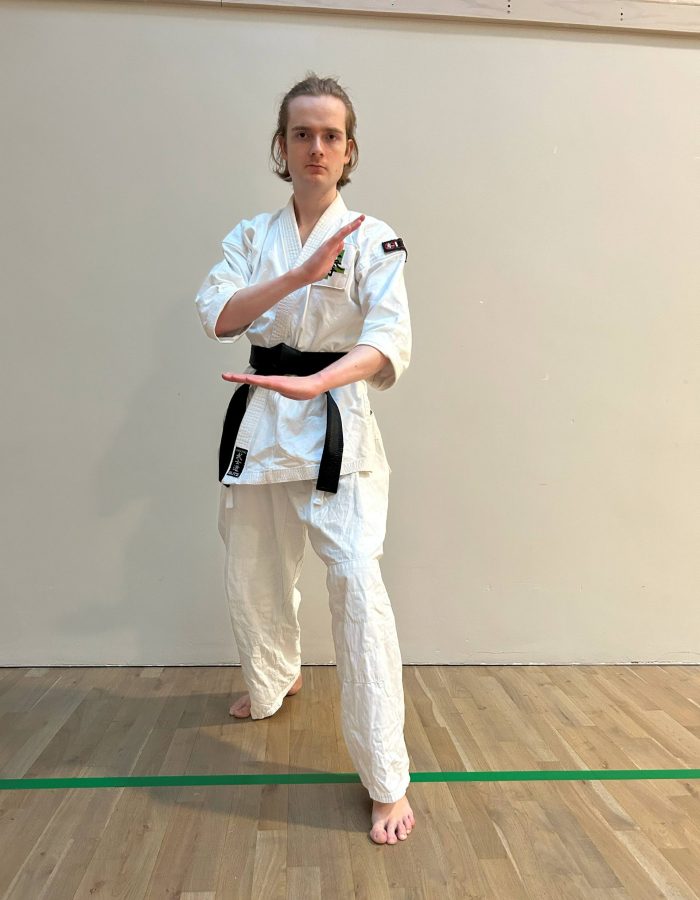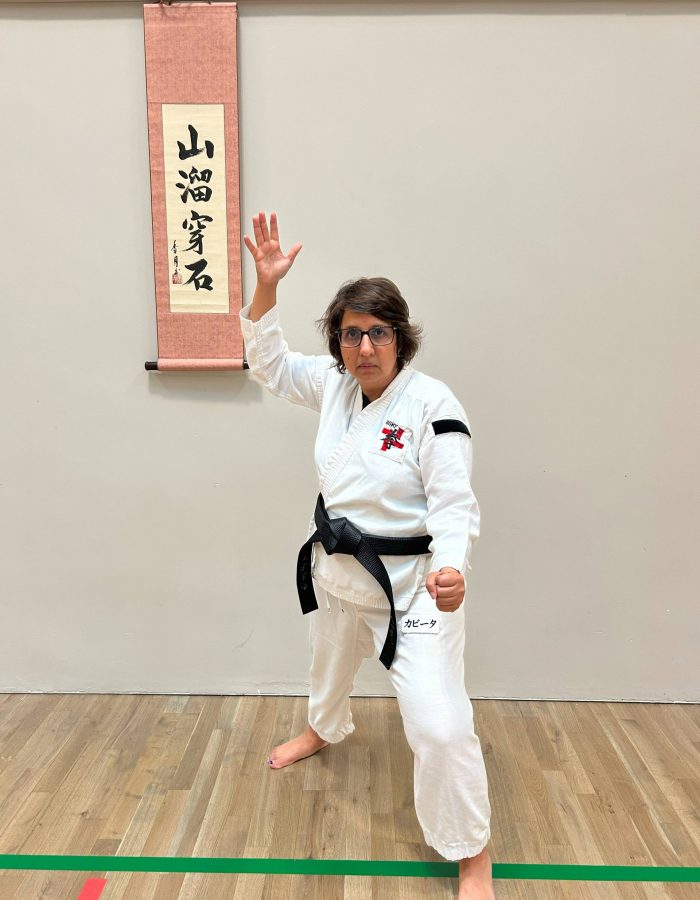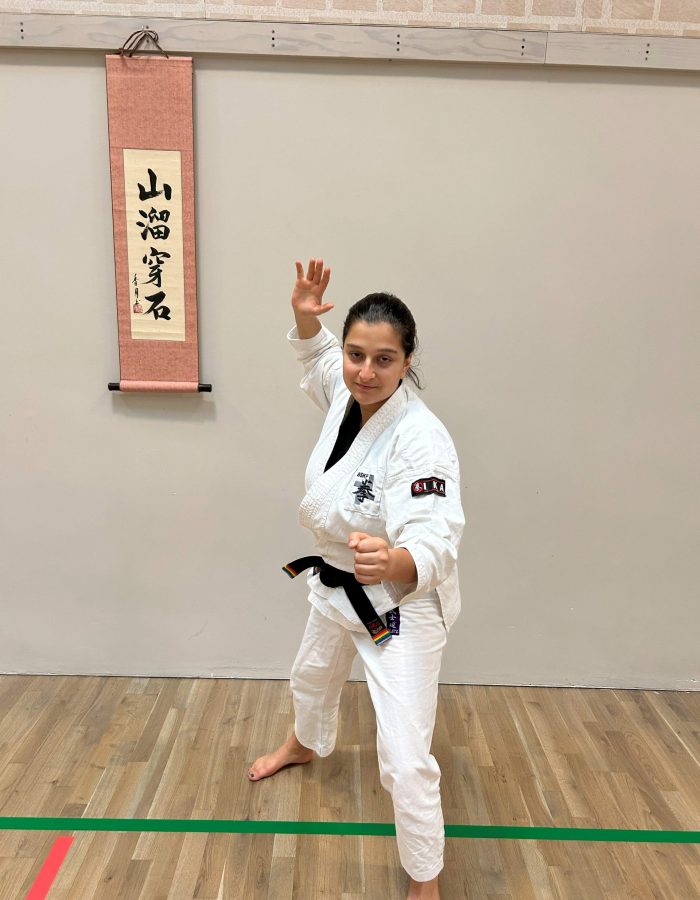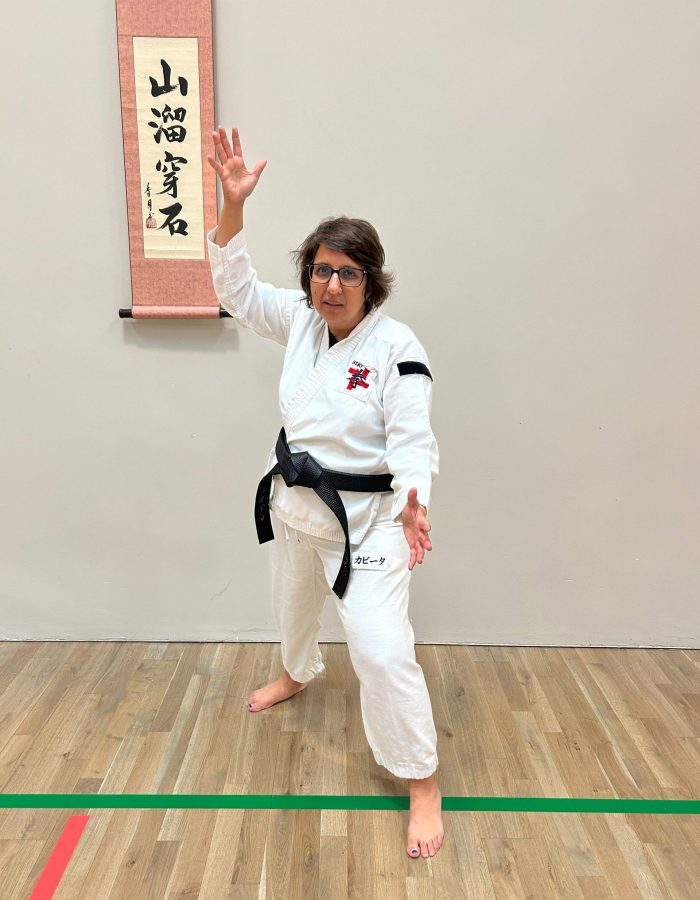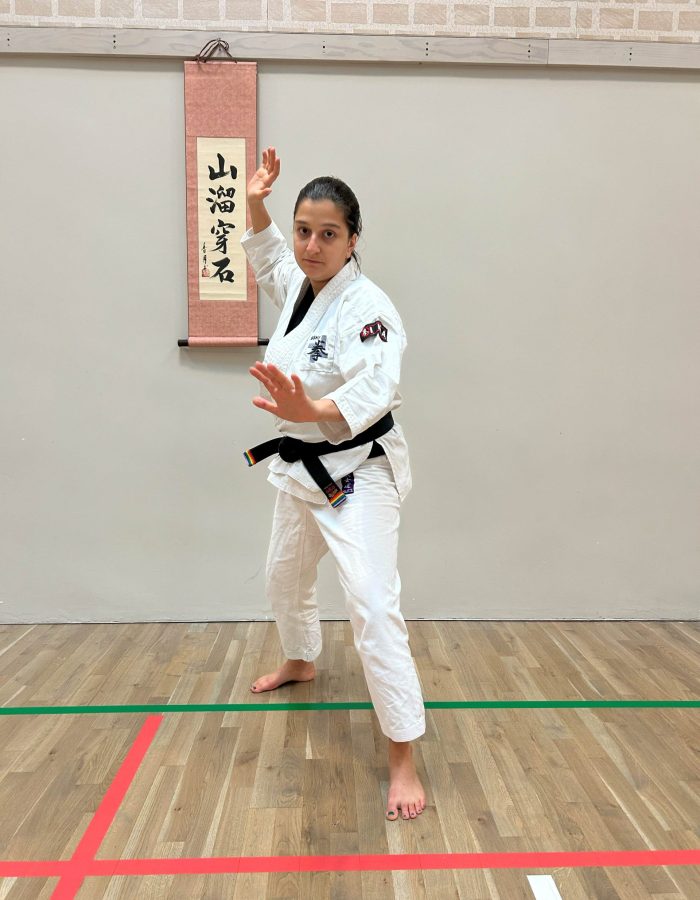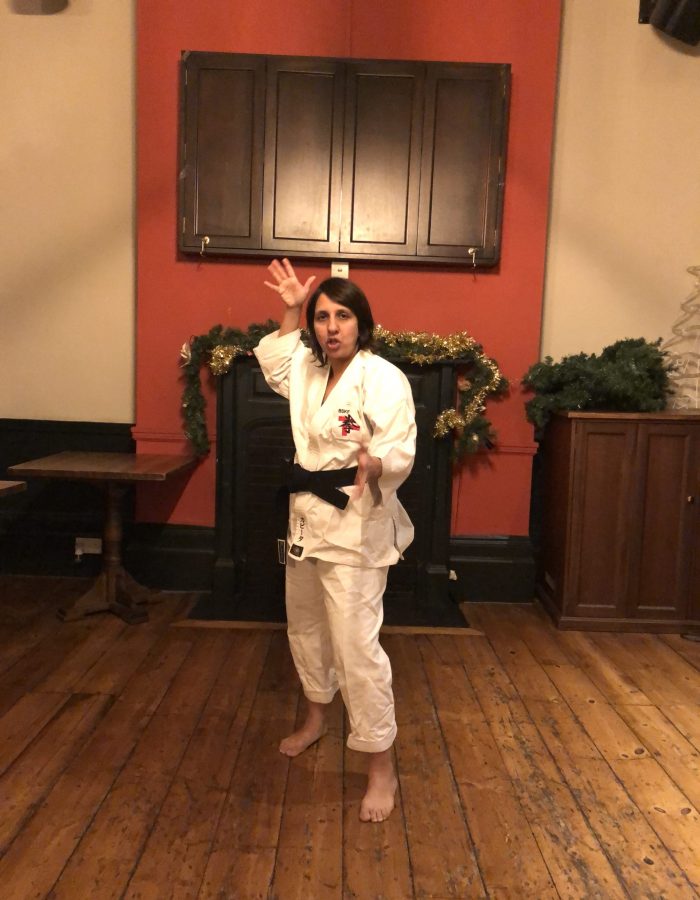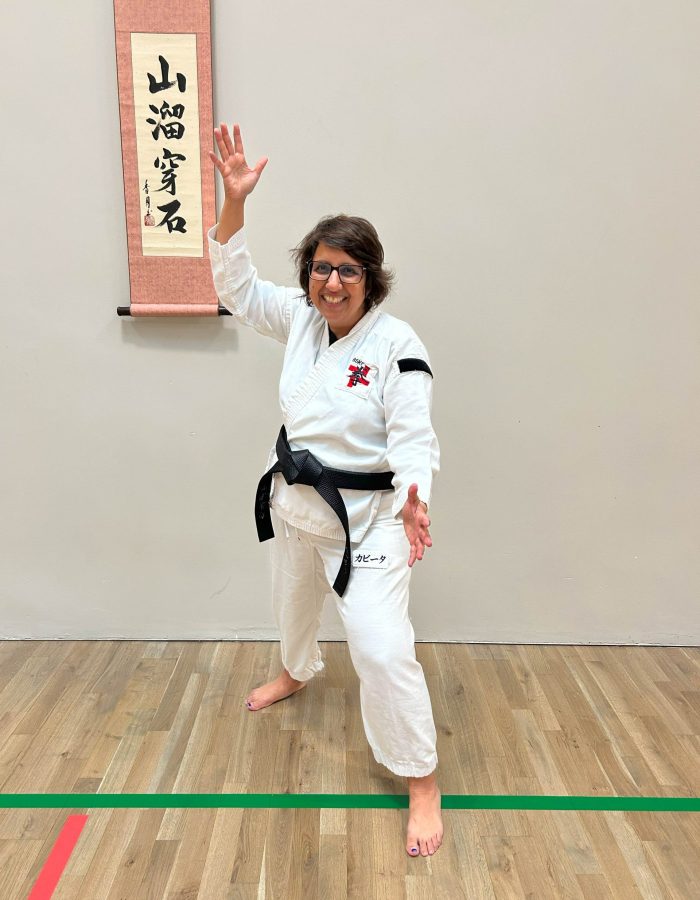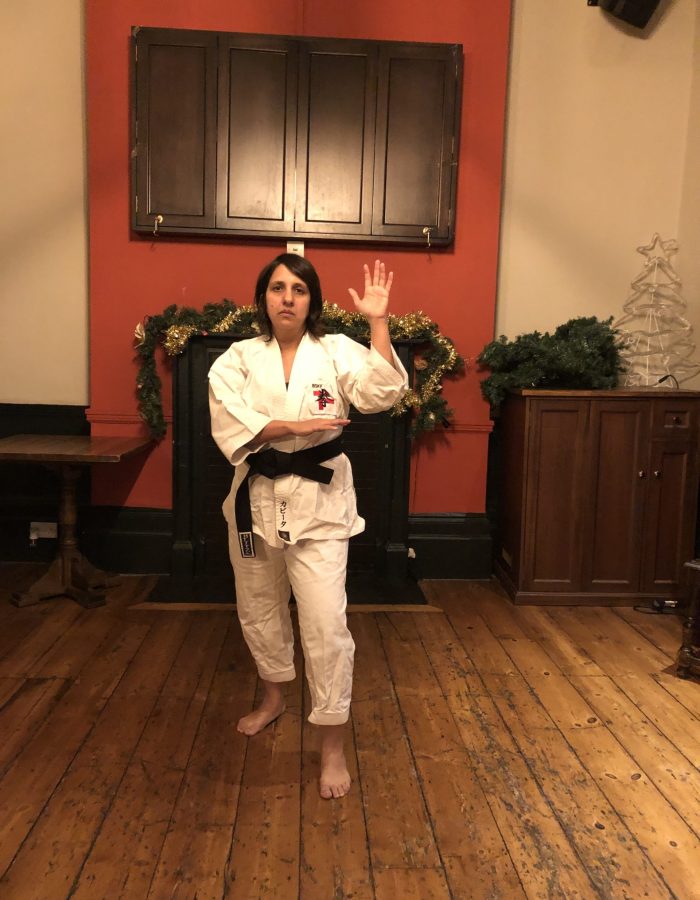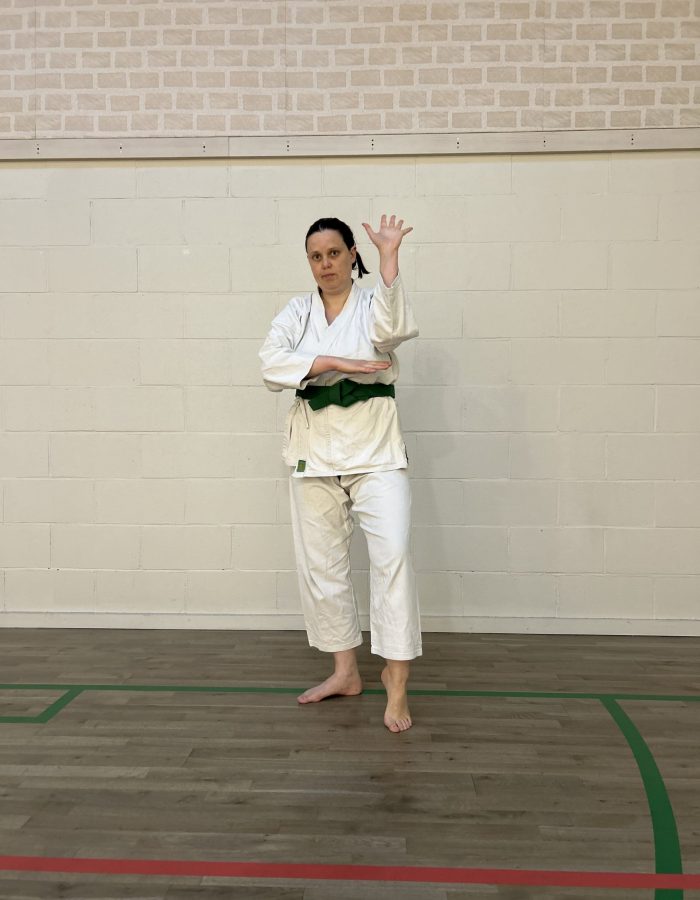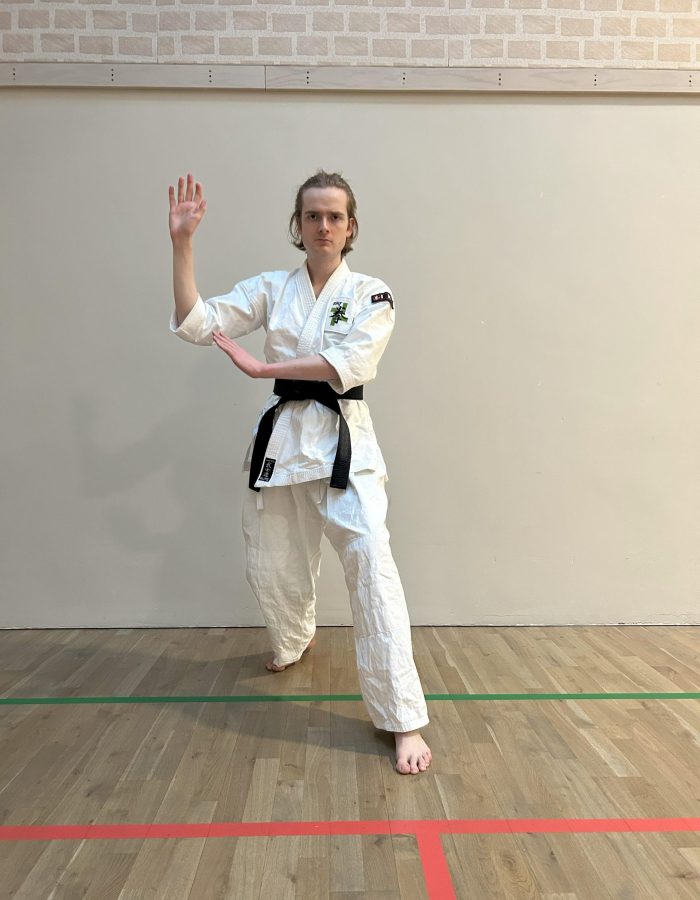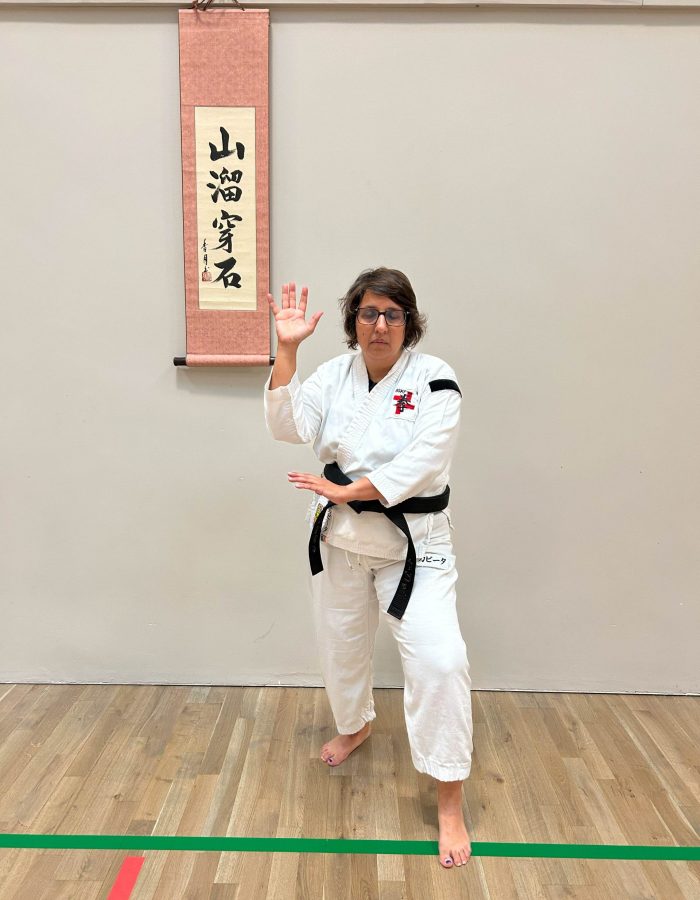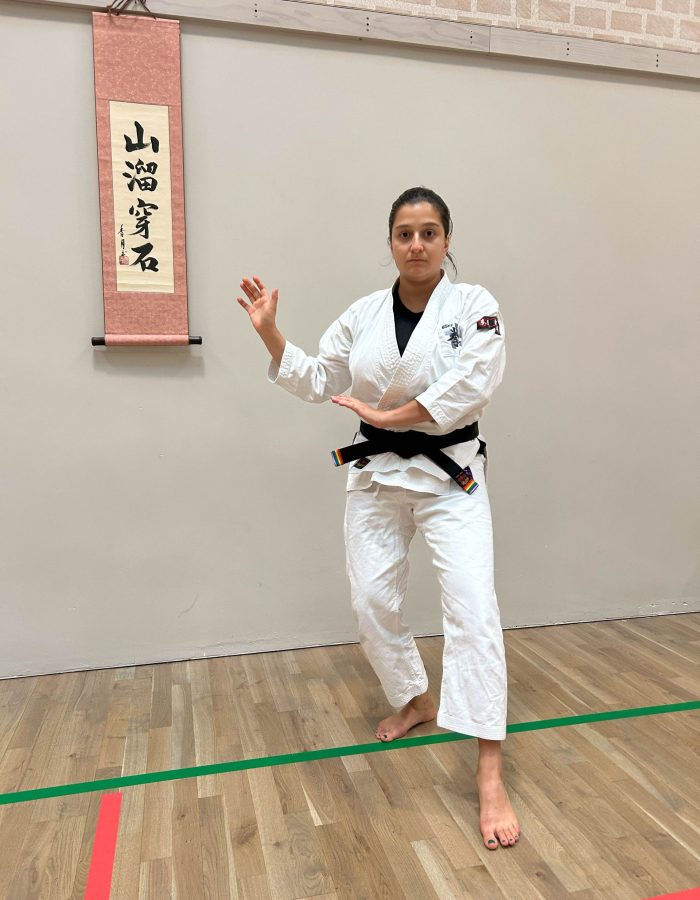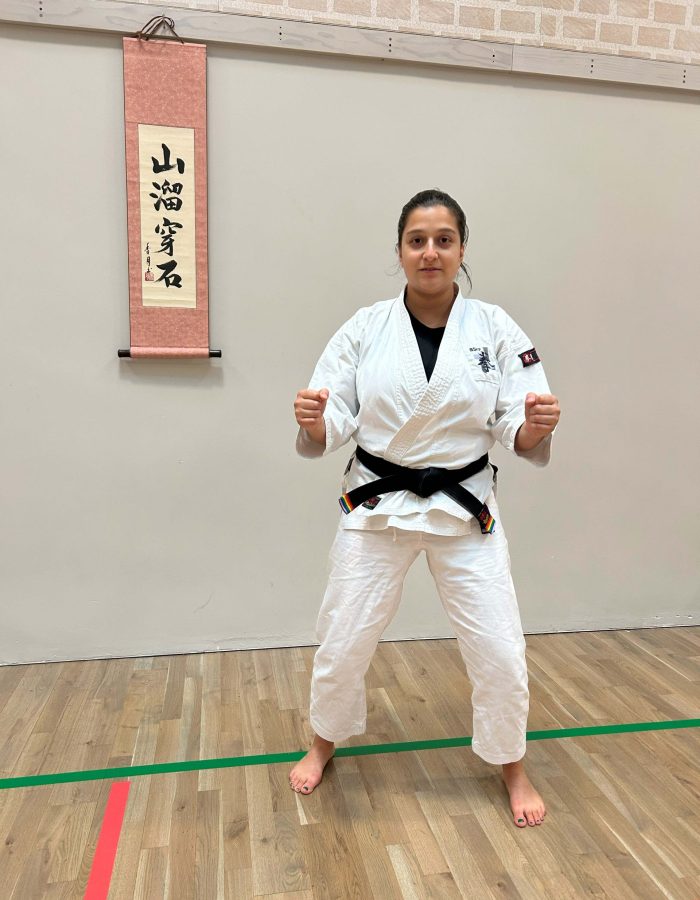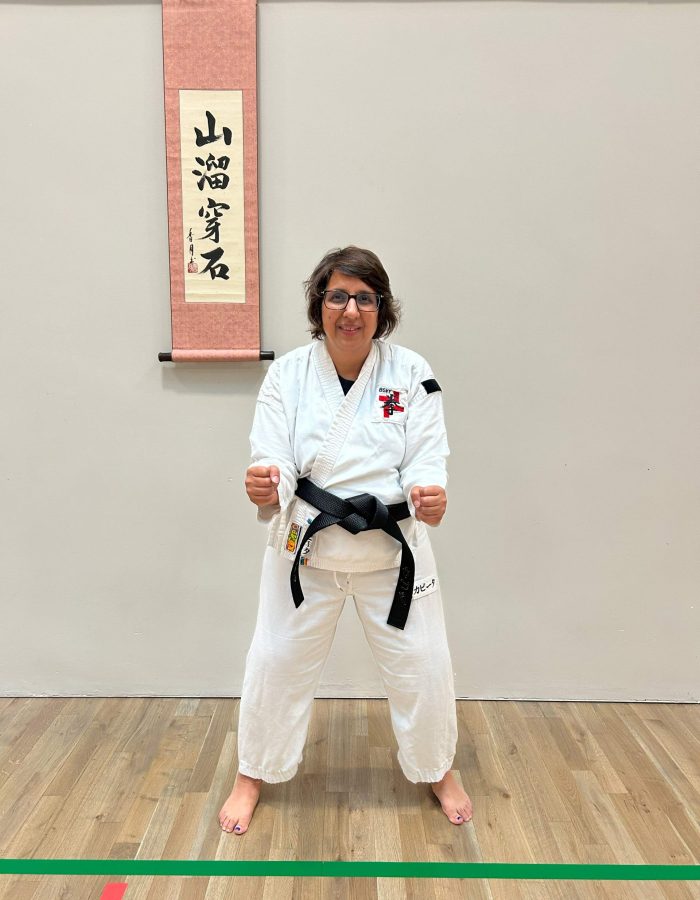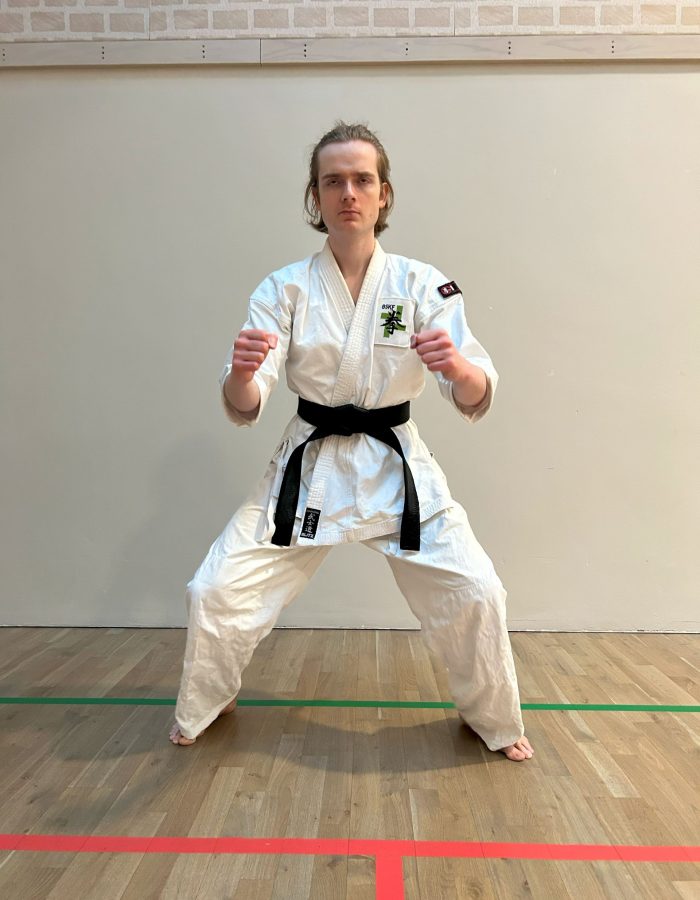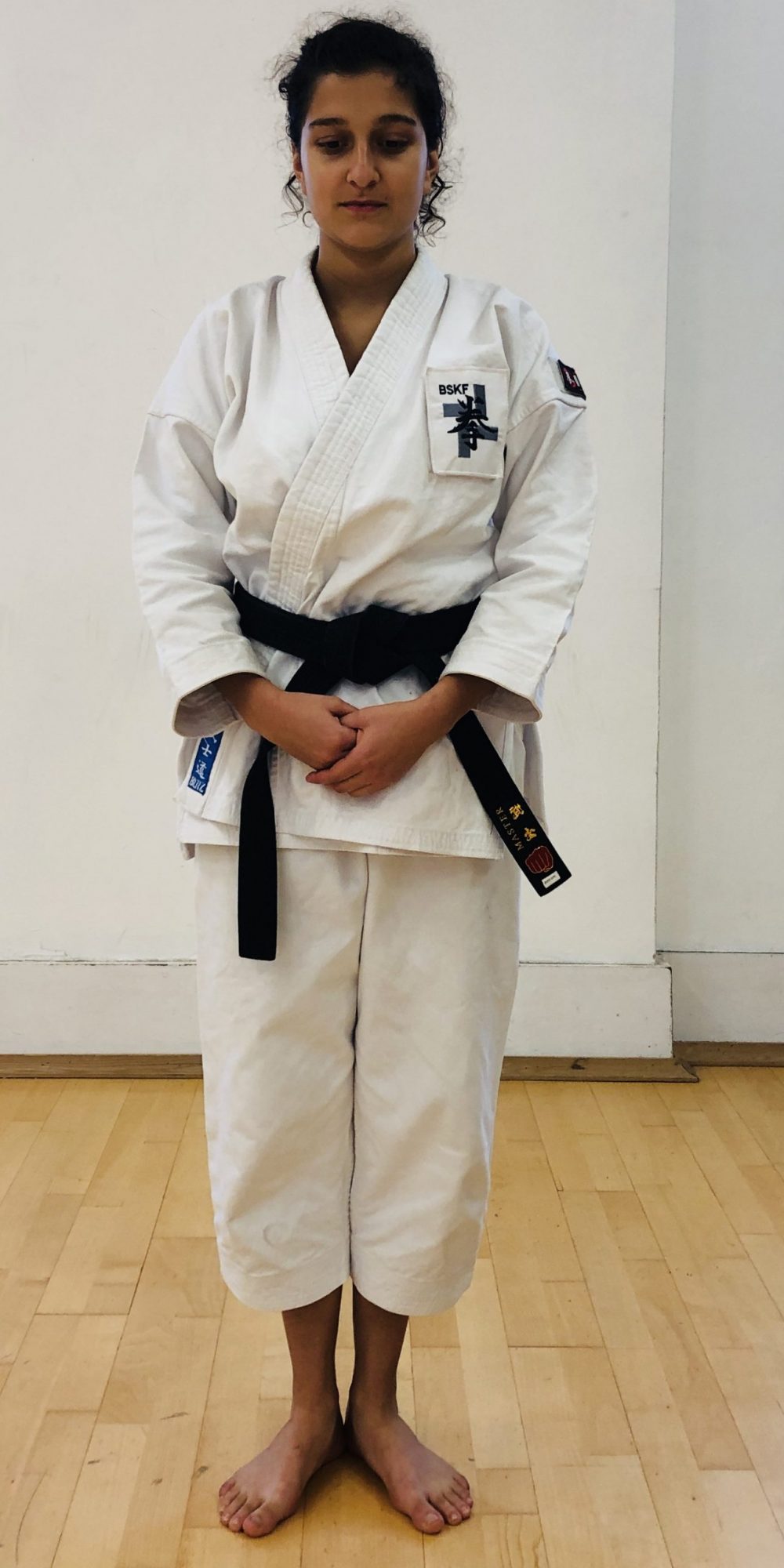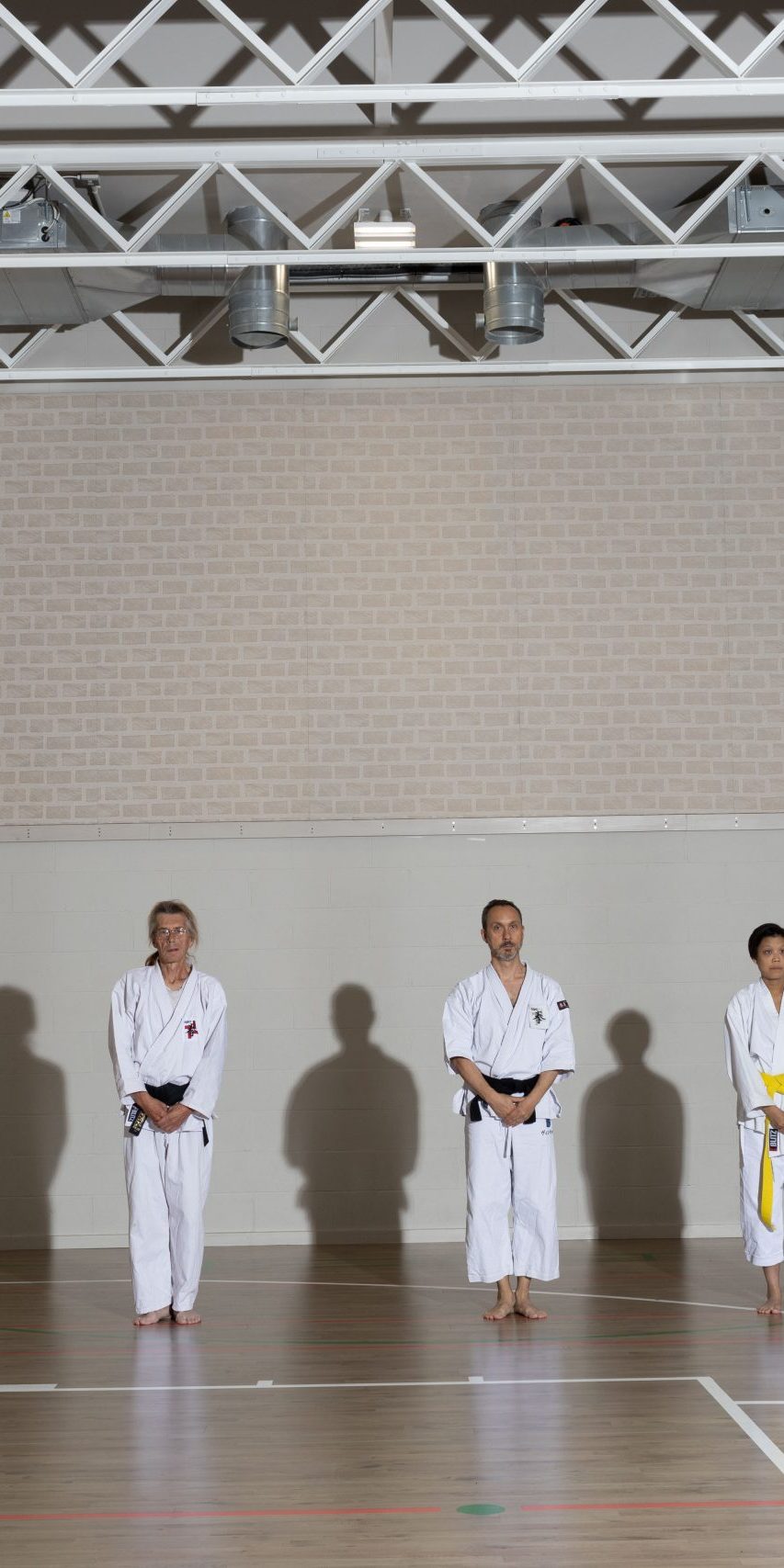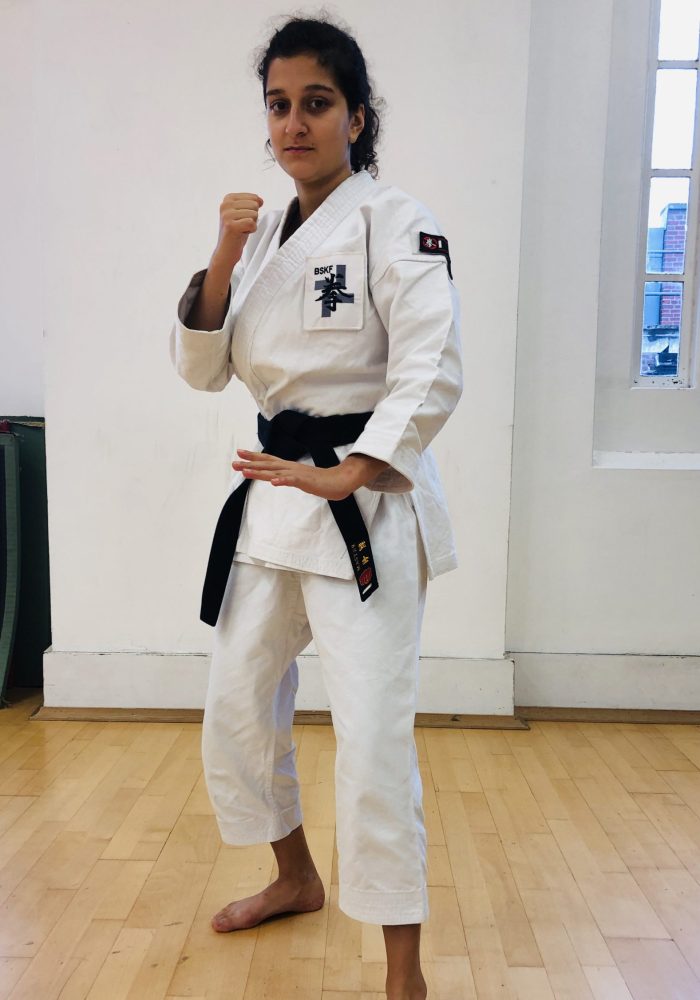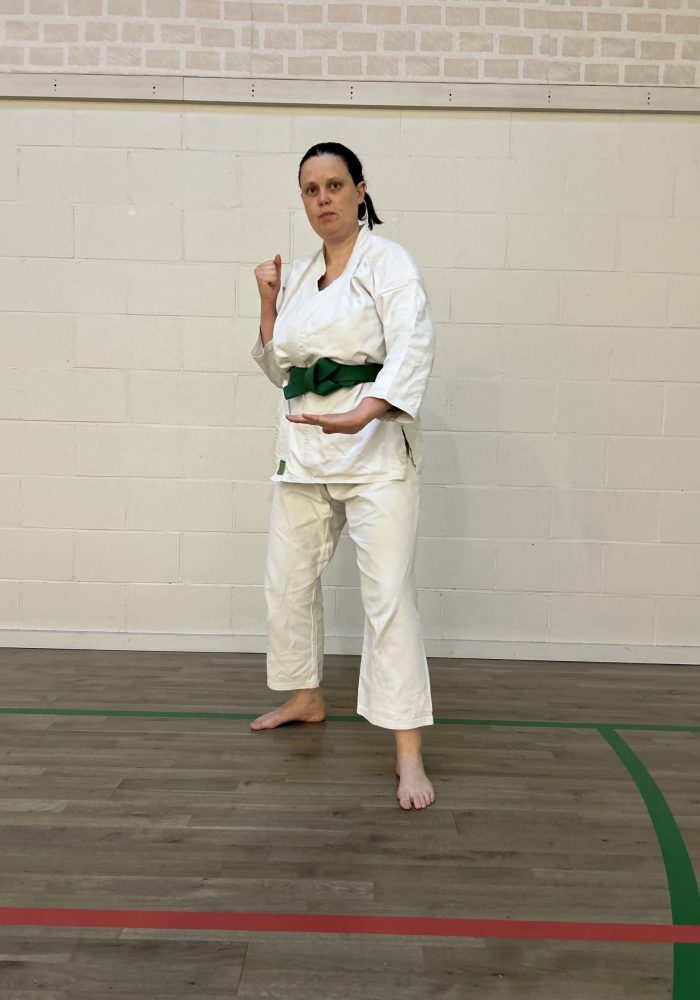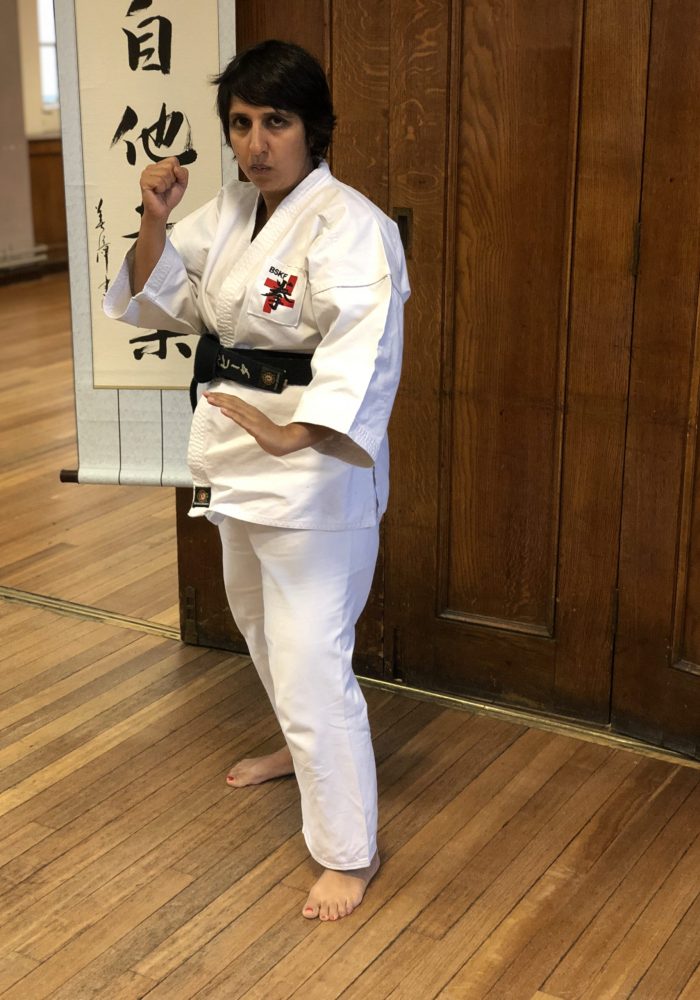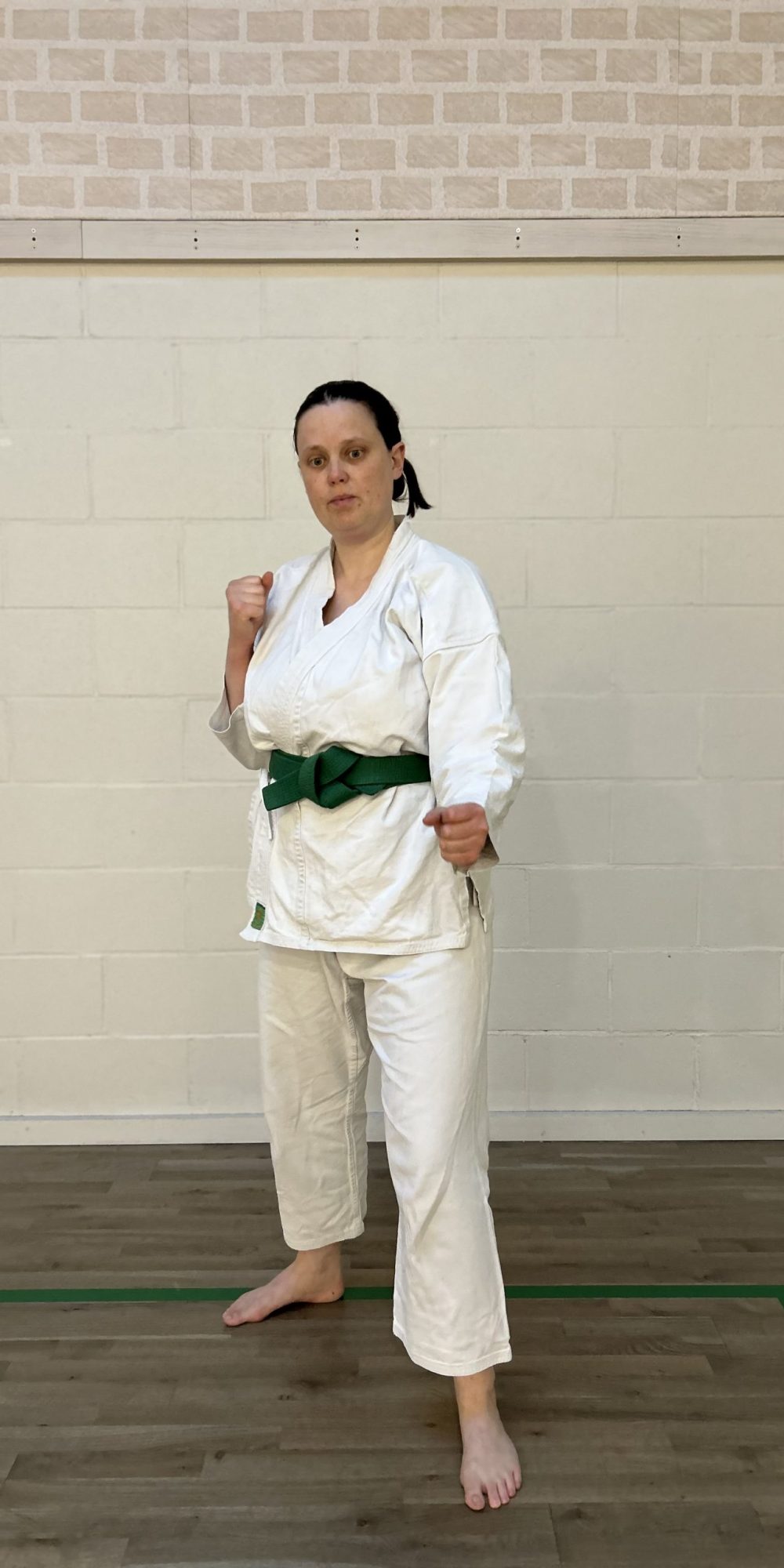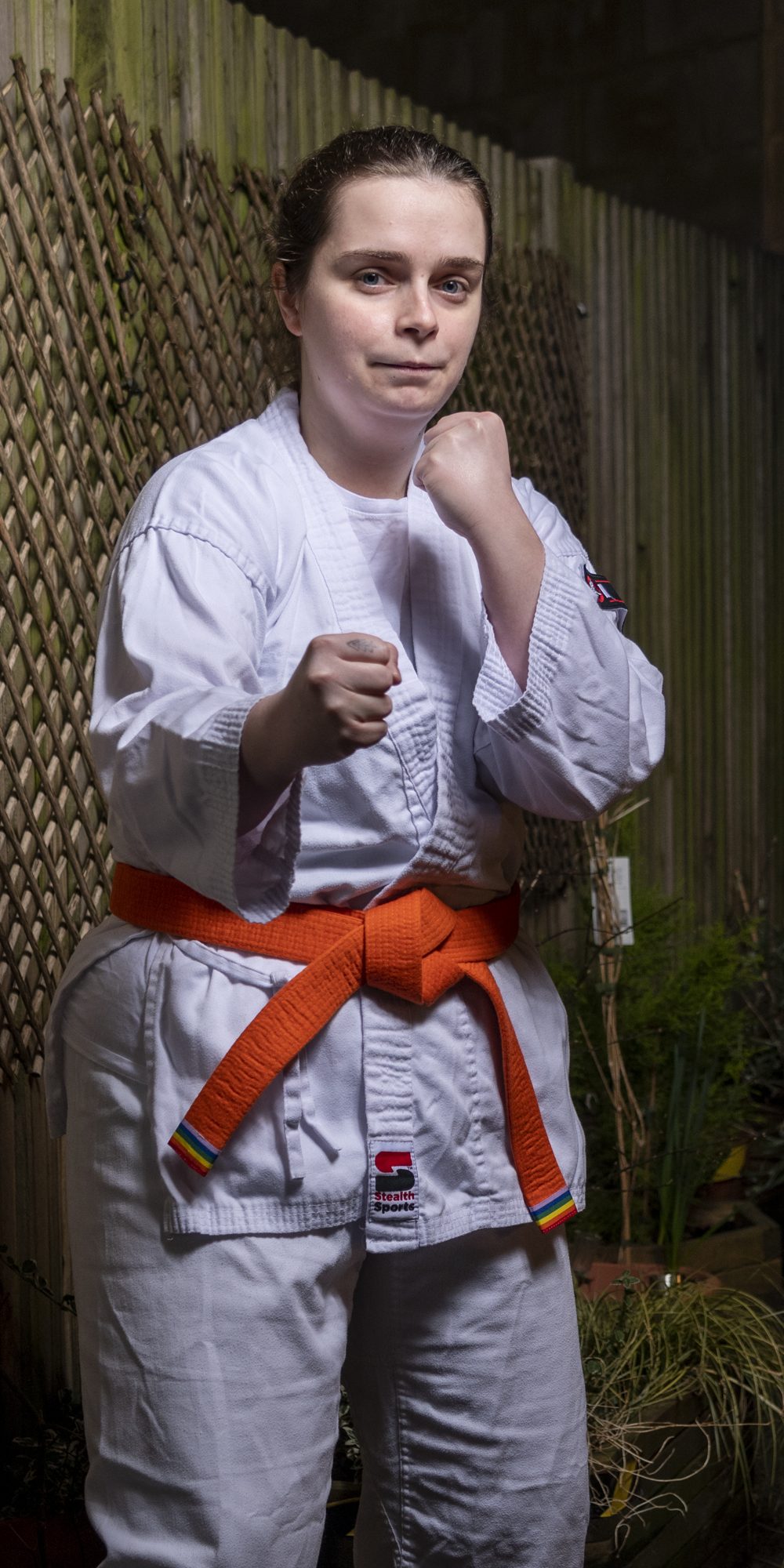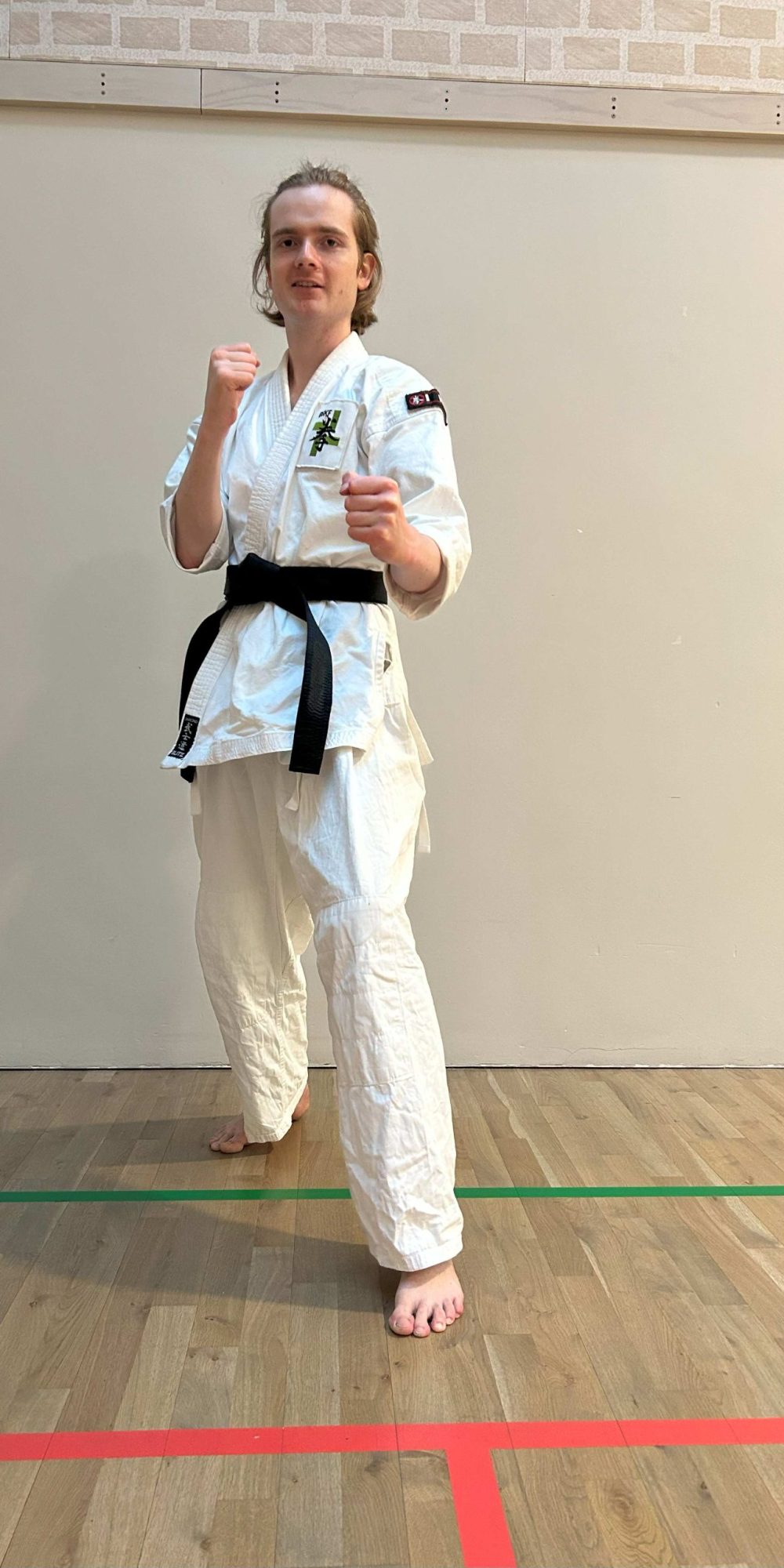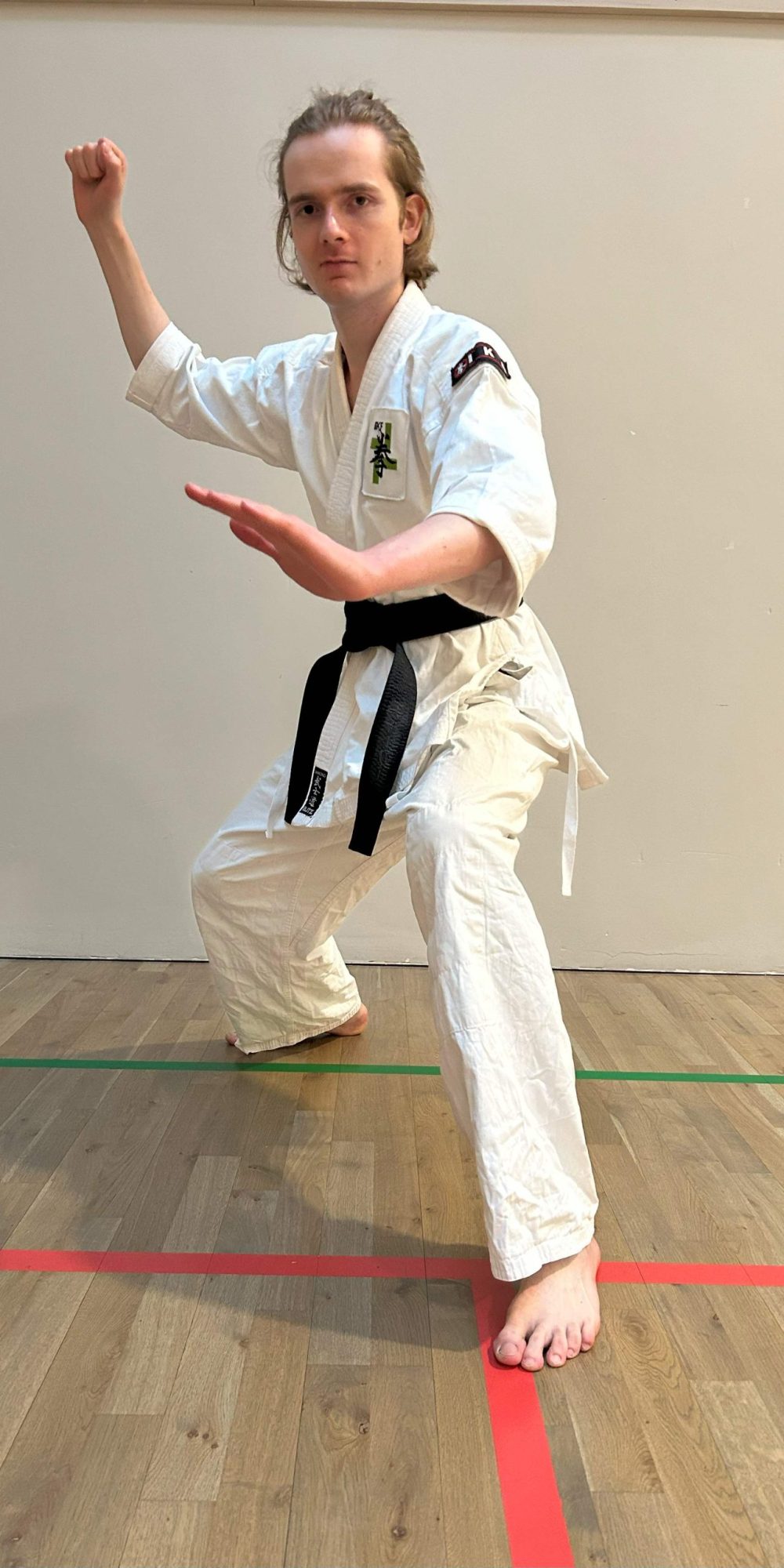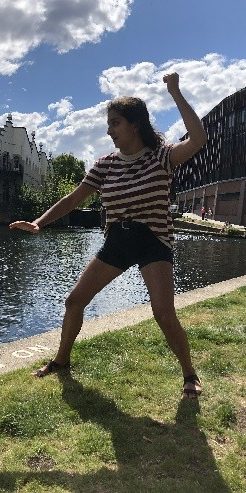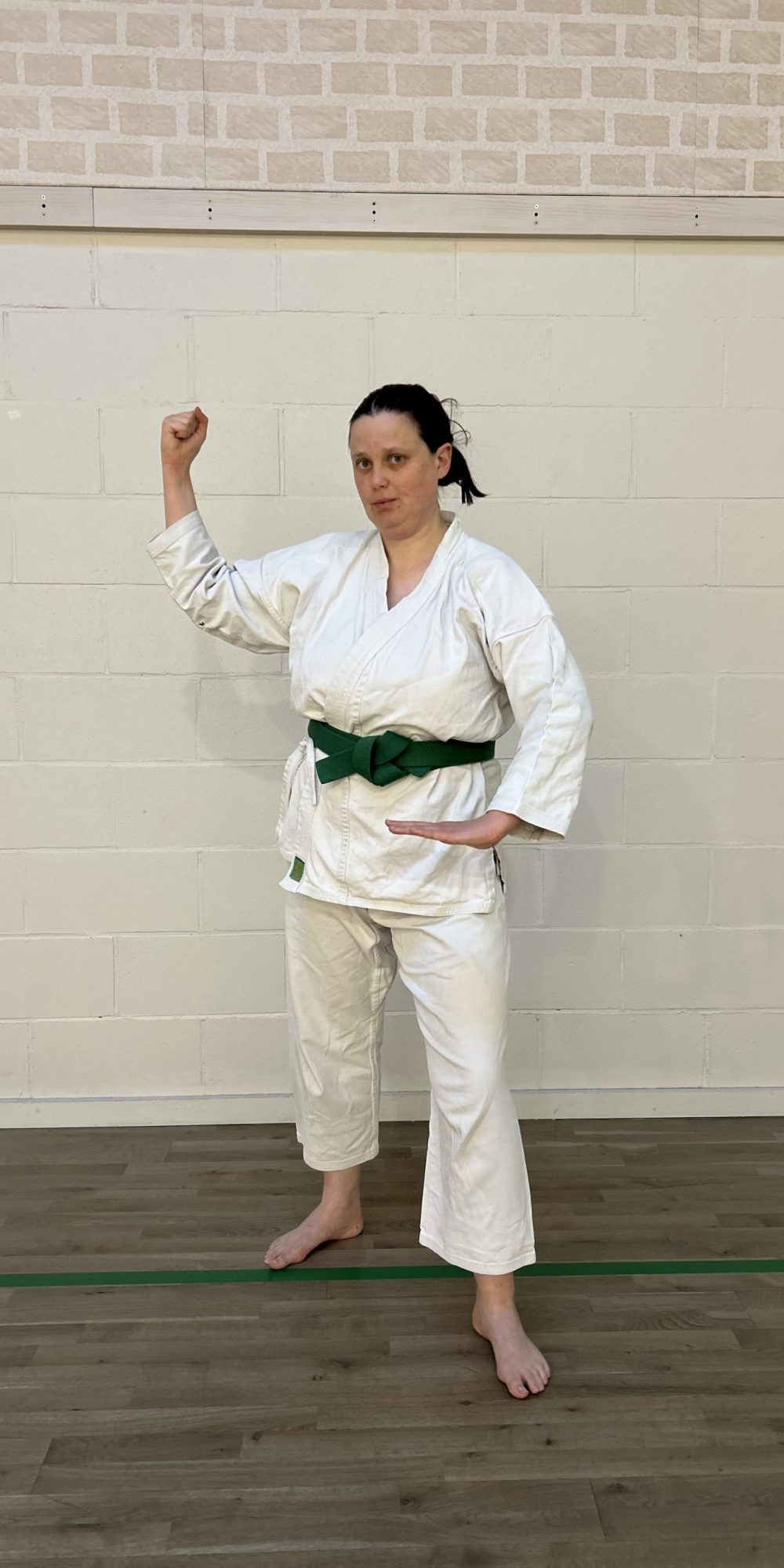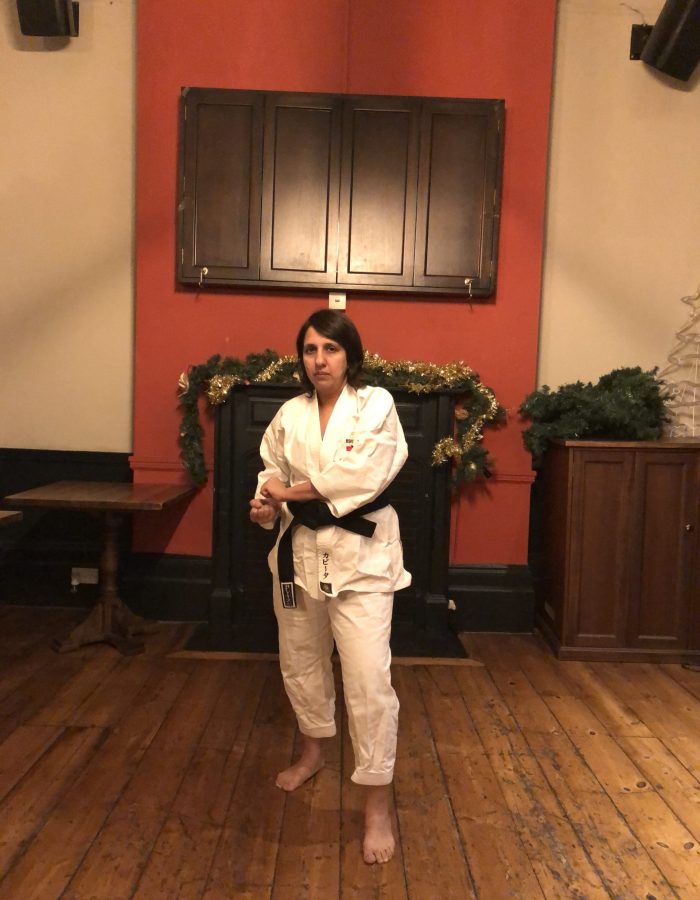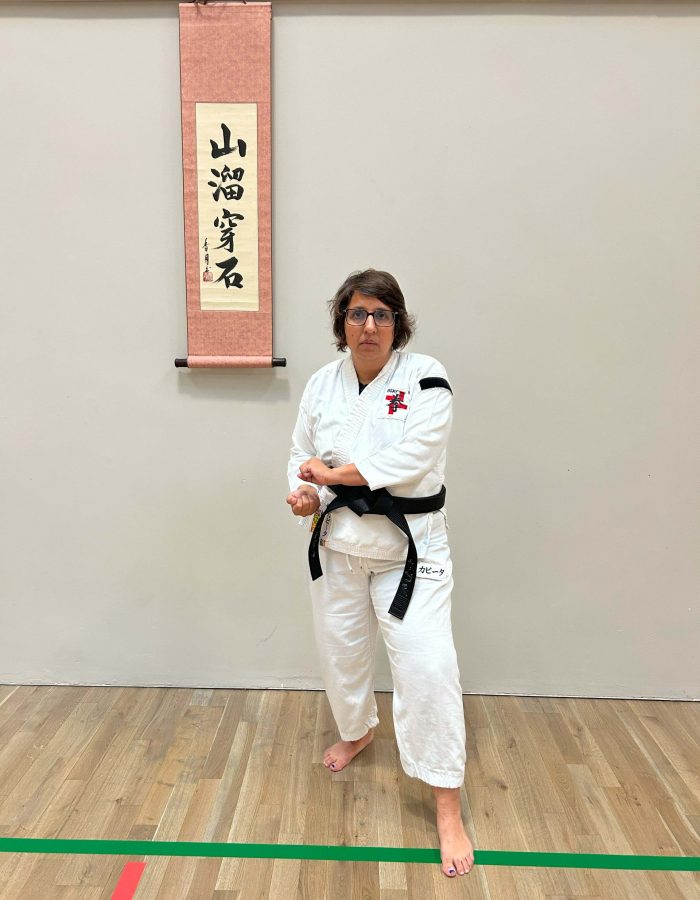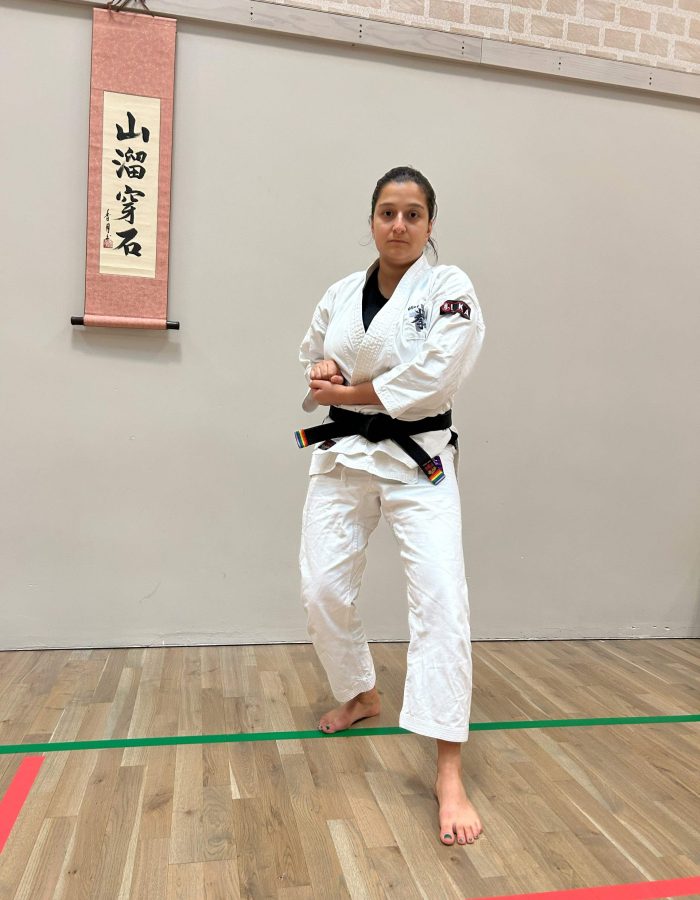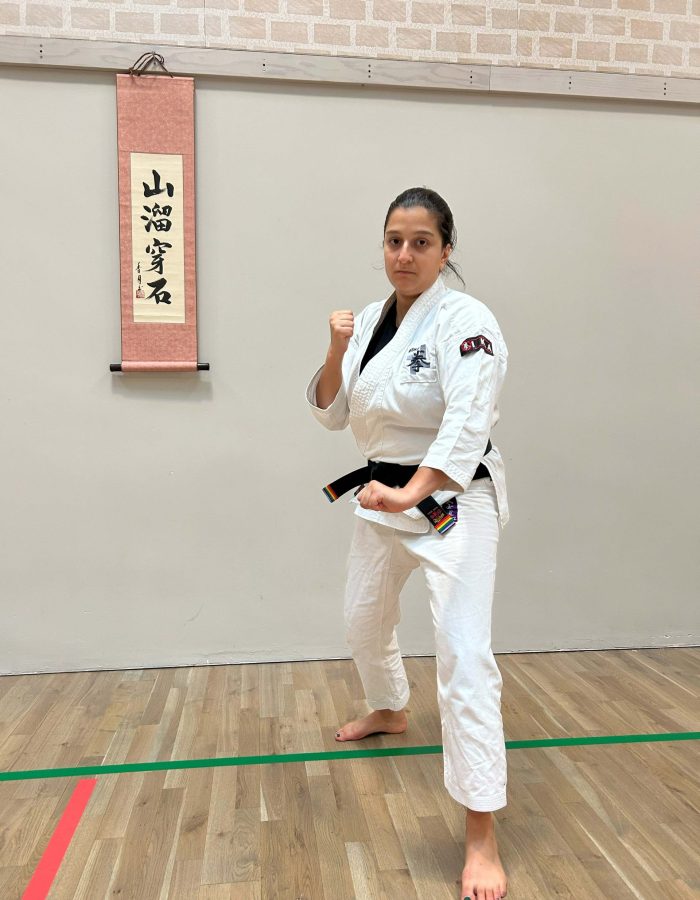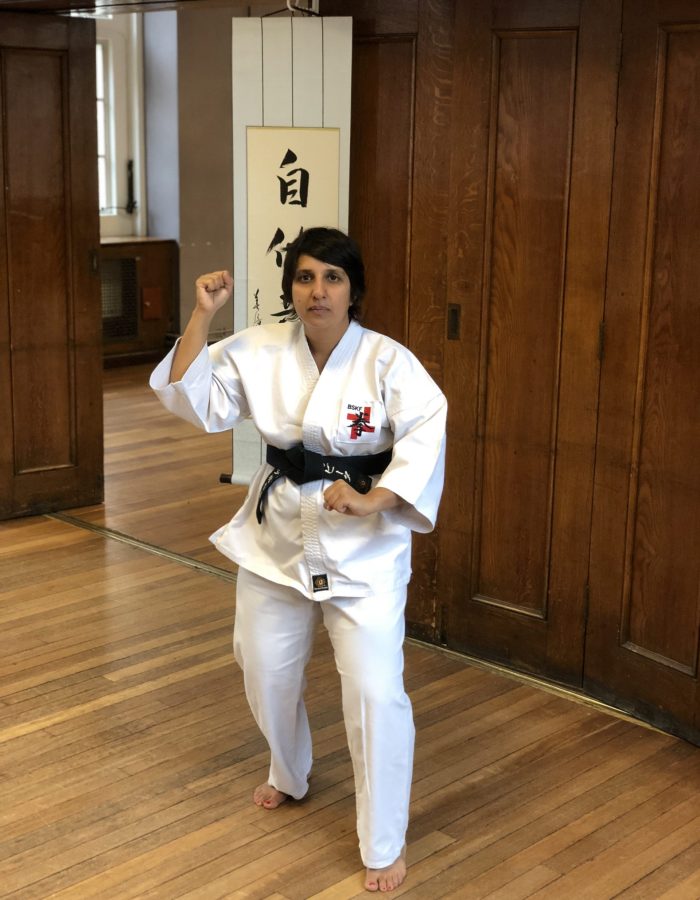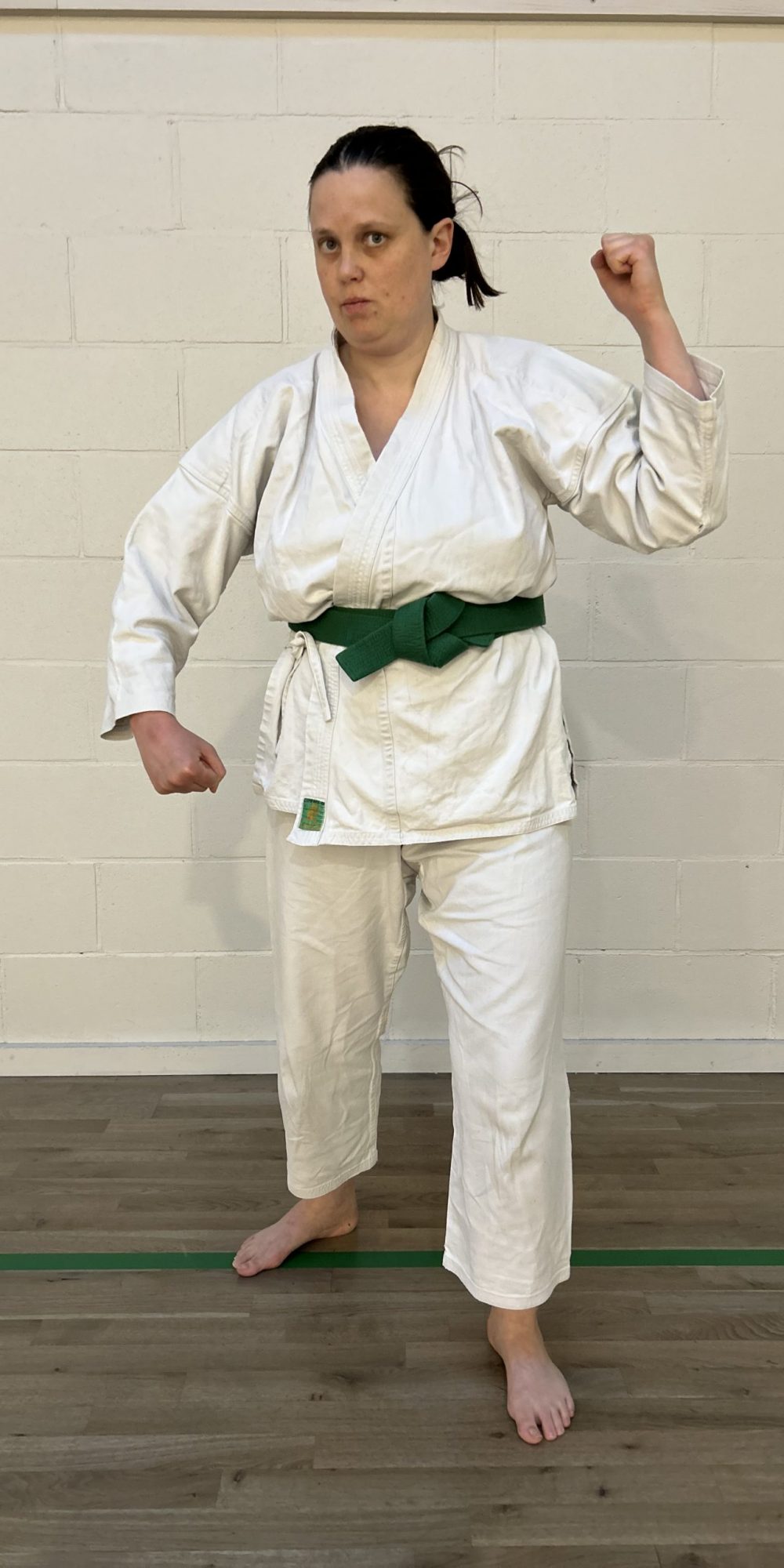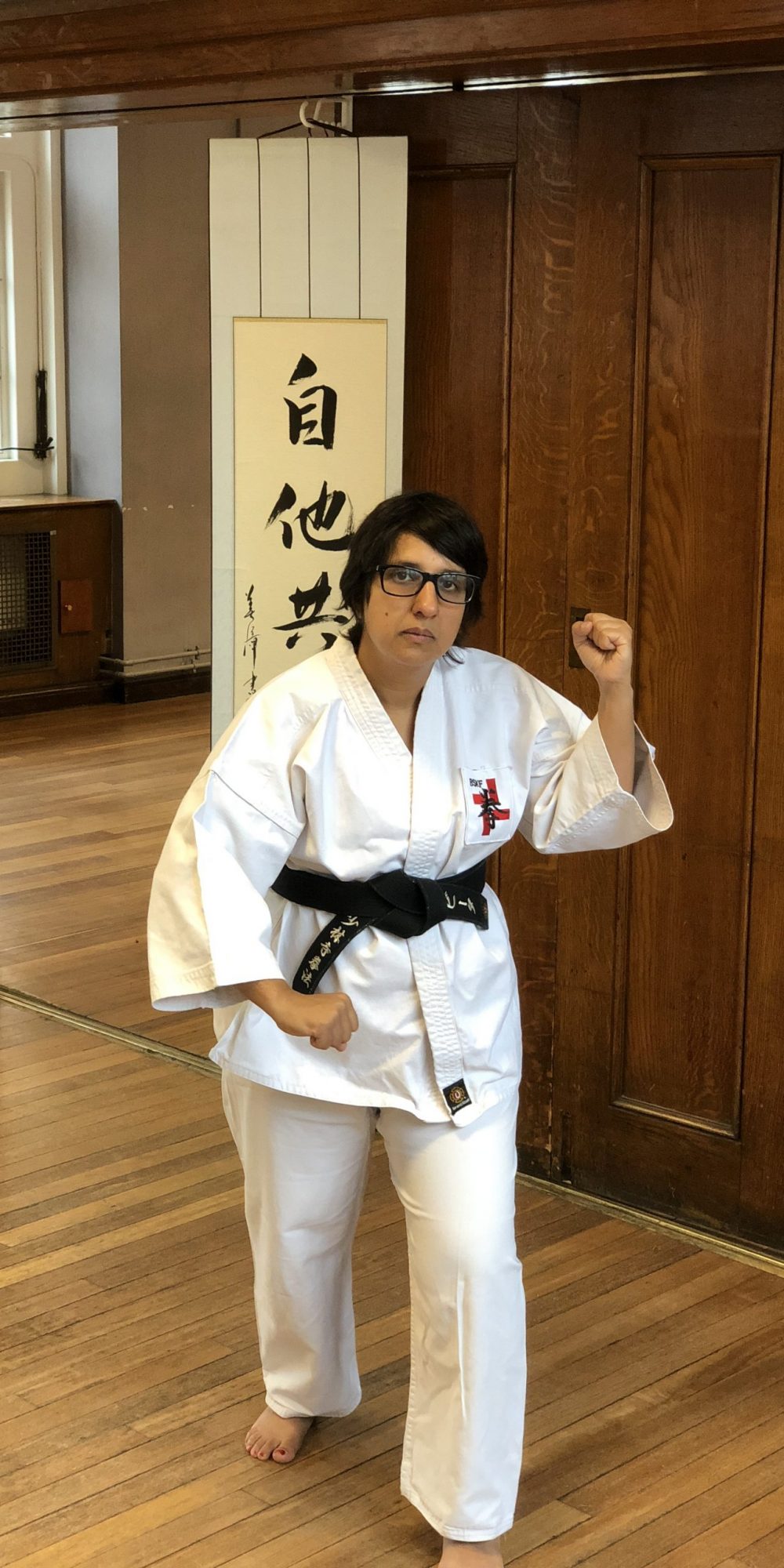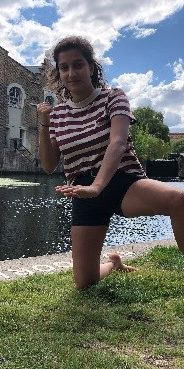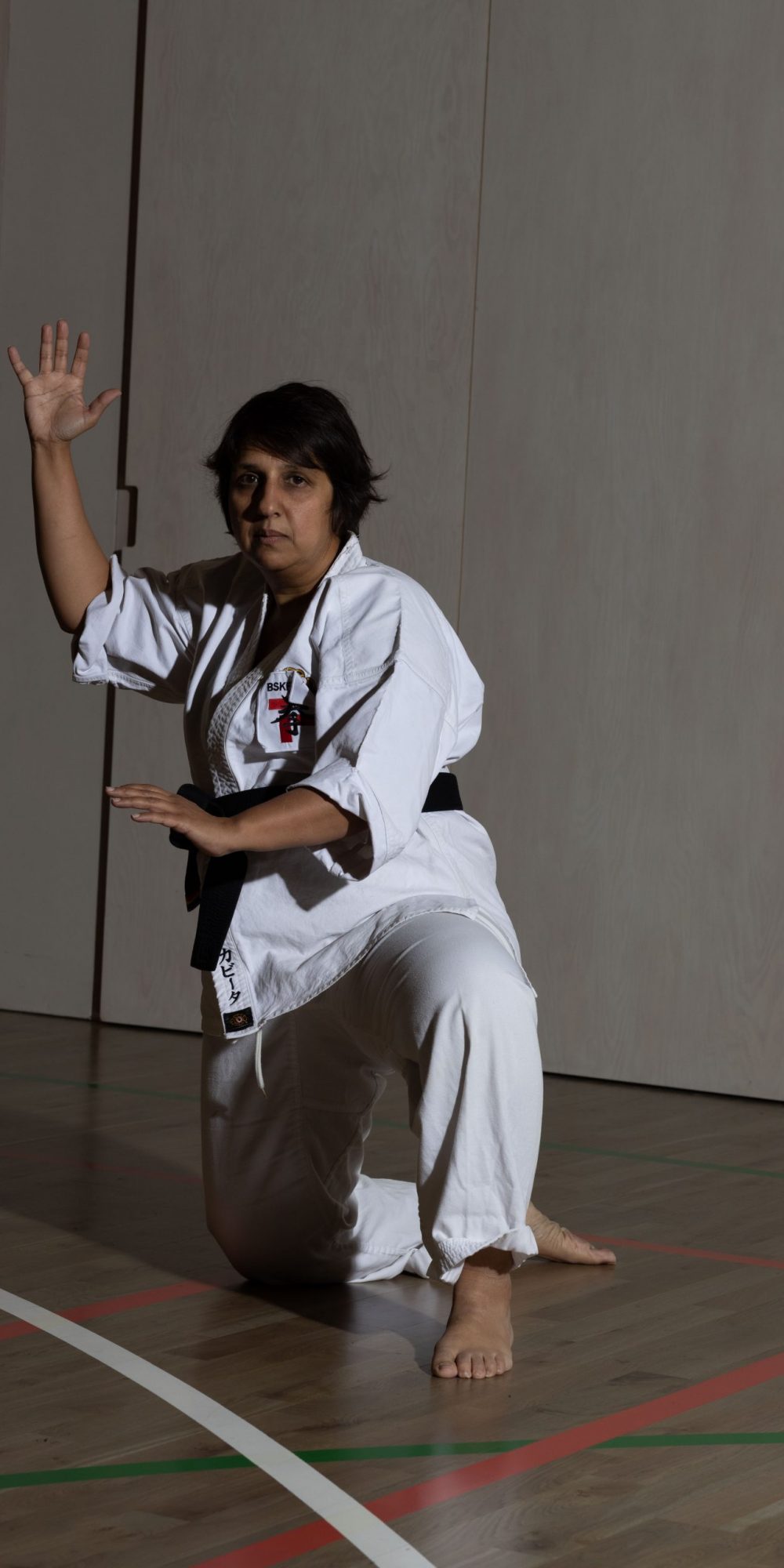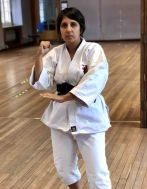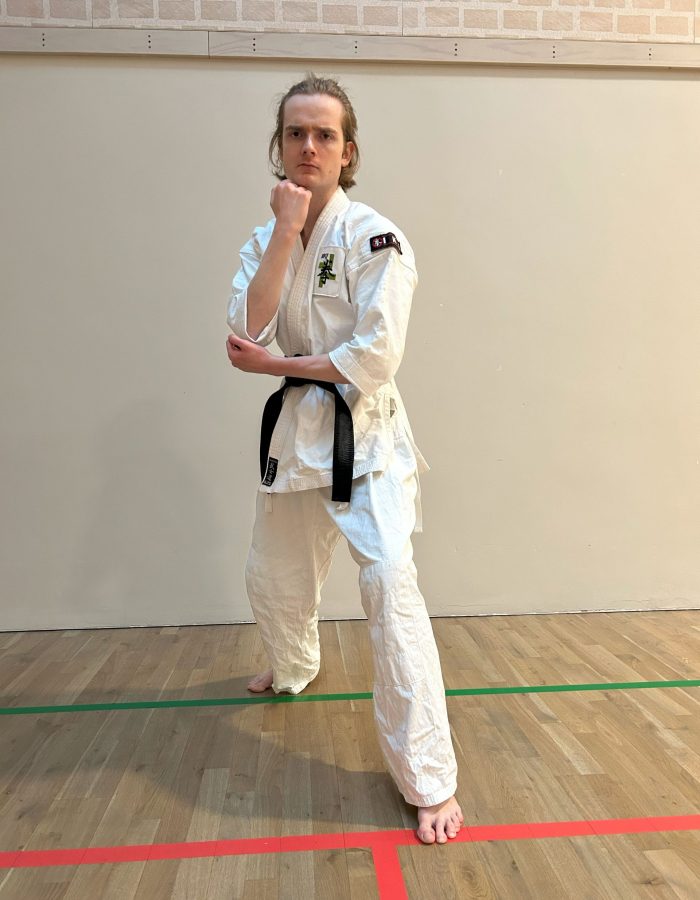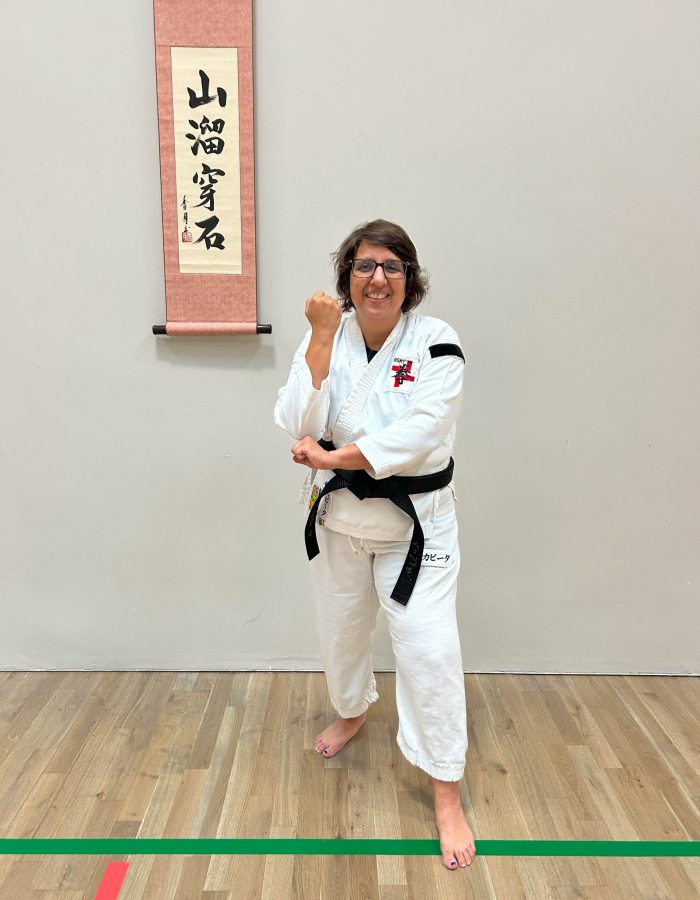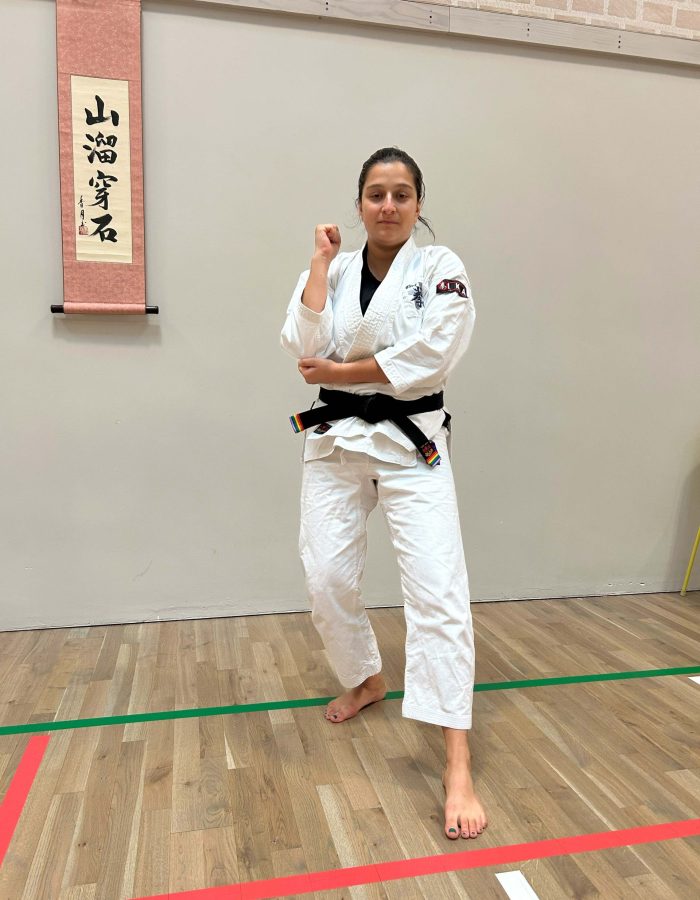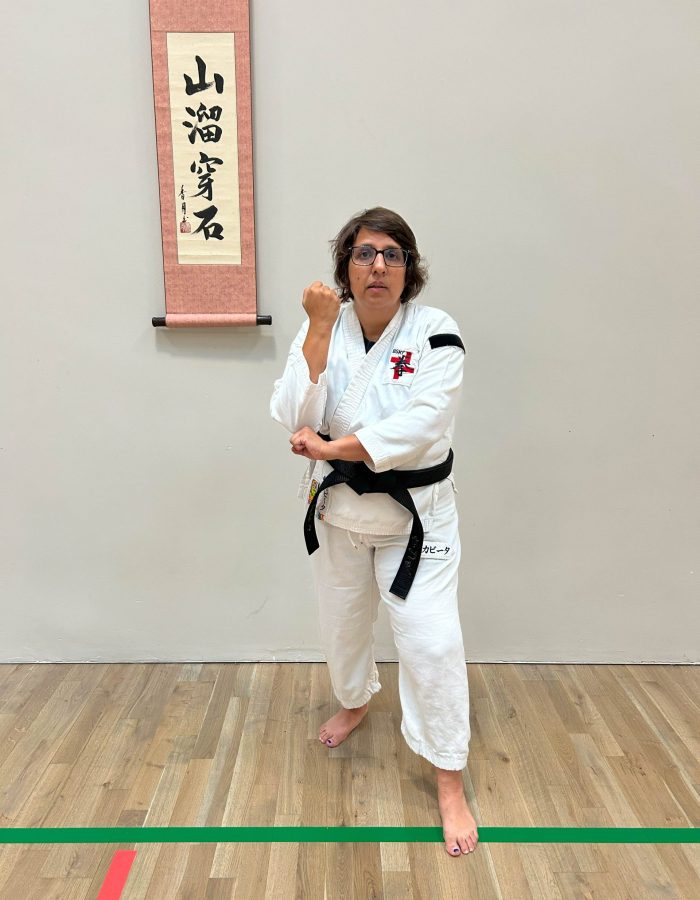Shorinji Kempo stances 構え (kamae)
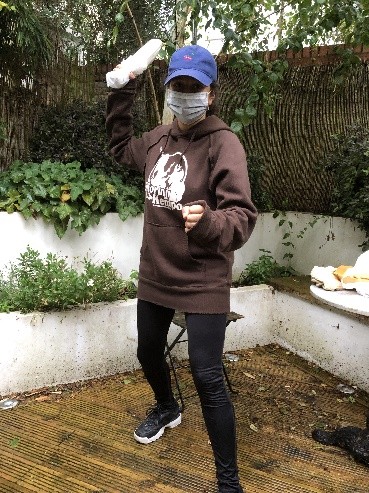
Stances in martial arts are the best pride moves of the fighting world! They’re not just about looking cool (though they definitely do that); they’re all about setting the stage for some epic action.
Gamae 構 translates as structure from Japanese. Kamae, 構え , かまえ means posture. The Kanji of this word means “base”. The term is used widely across a number of martial arts and has a Wikipedia entry all of its own.
There are 17 formal stances in Shorinji Kempo, grouped into two families (Byakuren and Giwa) named after the two Chinese schools from which the founder of Shorinji Kempo took his inspiration.
All our following stances can be done with either the right foot forward for migi, or left for hidari . Knees are slightly bent. Where not stated, then the feet are set shoulder width apart with the front foot turned in about 10° and the rear foot turned out about 45°.
| Tai Gamae (対構え) | When one student (kenshi) has a left-front stance, the other also takes a left-front stance. |
| Hiraki Gamae (開構え) | When one kenshi has a left-front stance, the other takes a right-front stance. |
Some stances are all about intimidation, like a peacock showing off its feathers to scare off any would-be attackers (hello, aiki gamae and manji gamae!). Others are sneakier, letting you chill in a relaxed pose while secretly being ready to spring into action if things get a bit too spicy—think midare or tate muso gamae.
In the world of Shorinji Kempo, stances are also a big deal when it comes to etiquette. It’s like the polite dance of martial arts! For instance, kesshu gamae shows you’re all ears during class, while gassho is a way of saying, “Hey, I respect you, let’s have some fun!” So, whether you’re striking a pose or giving consent to grapple, remember: it’s all part of striking that pose in martial arts!
Byakuren
Gassho gamae
合 (gatsu) ‘unite’
掌 (shō) ‘palm’
礼 (rei) ritual, gift or ceremony
When the instructor wants you to take up the Gassho Rei position, they will give the command: “Rei”. Once everyone is standing in Gassho Rei, the teacher will say “Naore” (なおれ), which means to return to the position in which you started.
Gassho Rei is a best way to give and withdraw consent in the dojo.
Hasso gamae
八相構え
Both hands are open, in front of your chest. The elbows are lightly placed against the ribs. The figures spread comfortably and palms turned to the attacker. The heel of the front foot is raised.
By keeping the body soft this stance does not appear threatening. If an attack is inevitable this stance invites an attack to the body and it is neatly set up for a block or counter.
Midare gamae
乱れ構え
The front hand is open and held across the body while the back hand is held open in front of the forward shoulder.
This invites an attack to the head and again is very unassuming so can be used if you feel threated but nothing has kicked of.
Manji gamae
卍構
The front hand/arm is held in a fist and is angled slightly above horizontal.
The rear hand is held open raised to head height leaving the body area open inviting the opponent to target this area.
Aiki gamae
合気構
Front hand much like hasso and back hand like an Indian singer.
As both hands are open and we like musical theatre we often call this one Jazz hands!
Taiki Gamae
待気構え
Both hands open, front hand high around the shoulder and back hand in front of chudan. This stance invites an attack to the head. Sensei Kavita’s preferred stance is to have her ankle raised so that you can stamp down when you turn. Taiki gamae, which is basically saying to an oponent, “Look at my head! Totally open for business!”.
Gyaku taiki game
待気構え
Both hands open, back hand high around the shoulder and front hand in front of chudan. This stance invites an attack to the head. Sensei Kavita’s preferred stance is to have her ankle raised so that you can stamp down when you turn. Reverse Taiki gamae.
Byakuren chudan gamae
白蓮中段構
(Kaisoku chudan gamae)
This is our normal training stance in which the feet are parallel. The hands are in fists and placed in front parallel to the ground.
Otherwise known as Horse Riding Stance or Gangam Style.
Giwa 義和九陣 (Boxer Nine Formations)
Kesshu gamae
Our ‘resting’ position, signalling that we are alert and ready for whatever comes next.
Ichiji gamae
A defender stance: front hand open, back hand closed in a fist.
Chūdan gamae
中段構え
The normal attacker stance. The front hand is closed making a fist and angled towards your opponents suigetsu parallel to the ground.
The back hand also a closed first held near your chin. Want to feel like a boxer then hold the back hand near your face but know that this is not the kempo way.
Remember your place your feet correctly.
Nio gamae
仁王構え
Weight is shifted backwards. Back arm is held high with raised fist, forward hand is held open in front of the belt.
Yoko muso gamae
橫無相構え
Weight is shifted backwards. Back arm is held high. Both fists are over each other on back foot about hip height.
Change to puppy gamae if holding a puppy.
Gedan Gamae
下段構え
Defender stance: front hand in a fist held in a horizontal position (palm down) in front of the waist.
Gyaku Gedan Gamae
逆下段構え
Similar to Gedan Gamae but the hand positions are reversed. This time the front fist is held at chest height, pointing at the opponent’s head. Shoulders are turned to bring the rear shoulder forward and present the rear fist to the attacker. The rear fist is in a horizontal position (palm down) in front of the waist.
Fukko gamae
伏虎構え
Super cool crouching dragon. Kneeling on the rear knee, the front foot is positioned to give you a perfect L shape.
Tate muso gamae
立無相構え
Front hand is open under the back arm’s elbow, like Ichichi game. The back hand held up ready with fist. Sadly musso does not mean mustache.
The way you hold yourself in any situation has an effect on how your feel in your surroundings. It is as much a mental activity as a physical activity.
As you advance through your training, you should be focusing on weight distribution and the form that feels natural. In an original textbook their is a quote that equates form to water with water being constantly changing such is the nature of stances.1
Try thinking about your form in a dull work meeting, waiting for transport or getting a drink in the Perseverance . You can always be experimenting with your physical presence and the environmental reactions.
- Do Shin (1979) 林寺拳活教範, Republished. ↩︎

